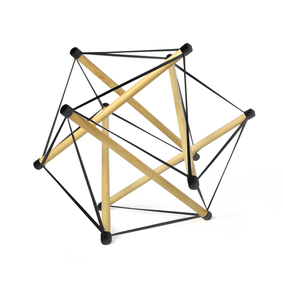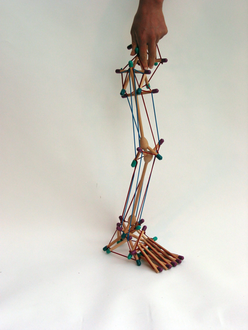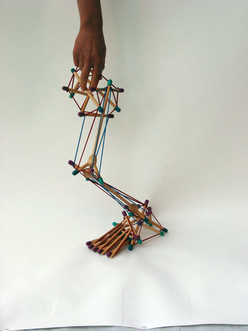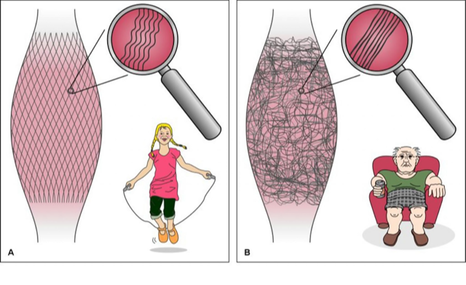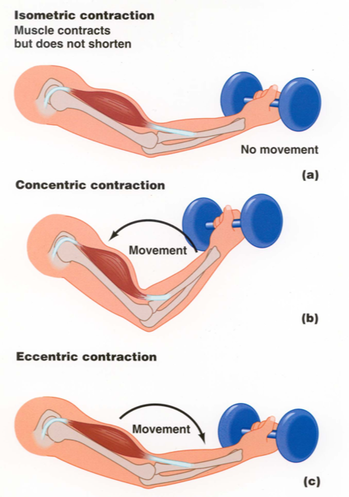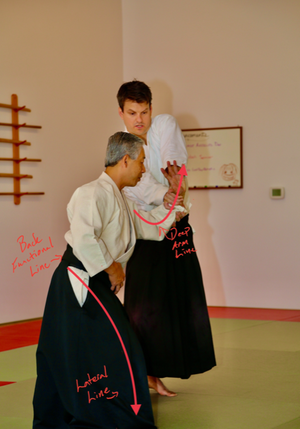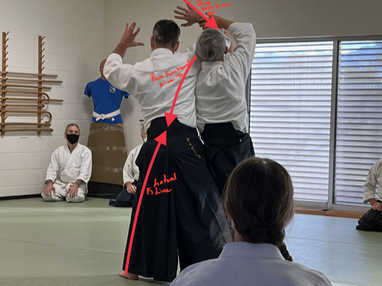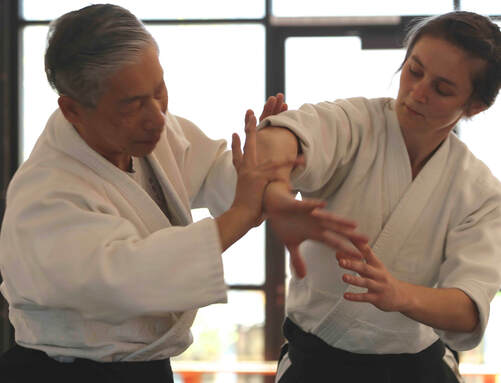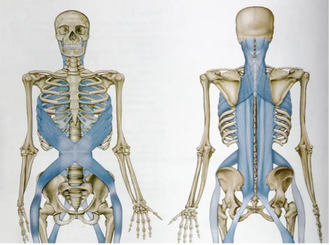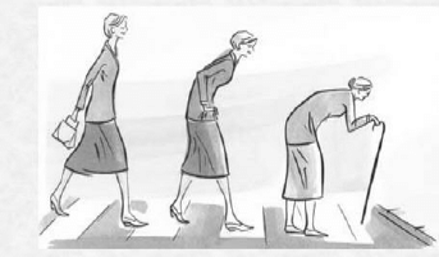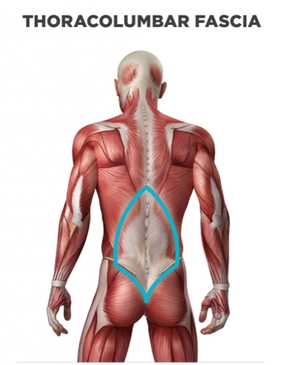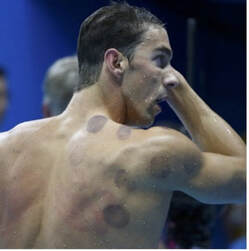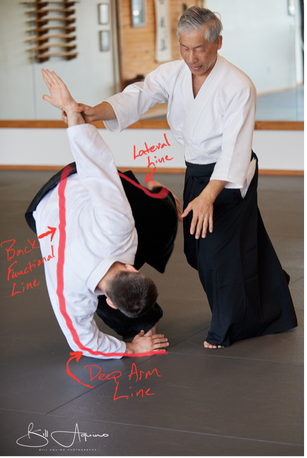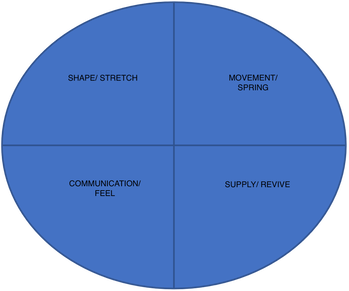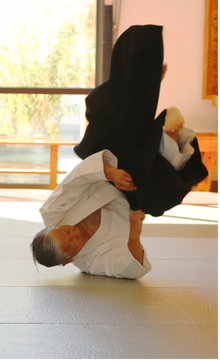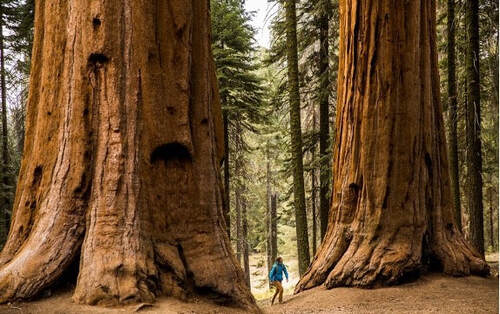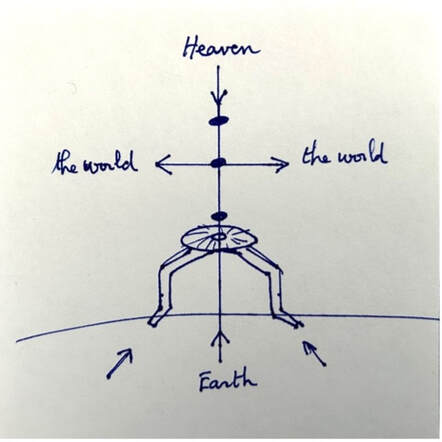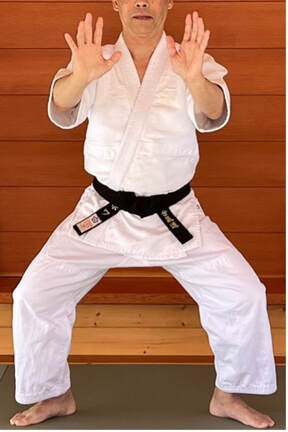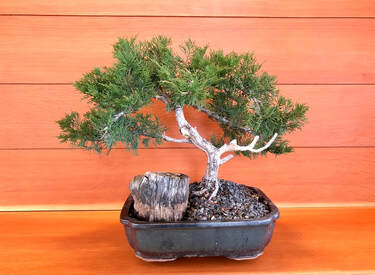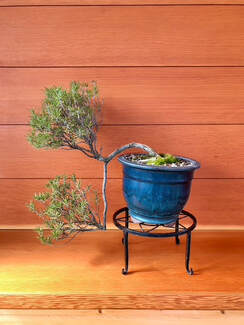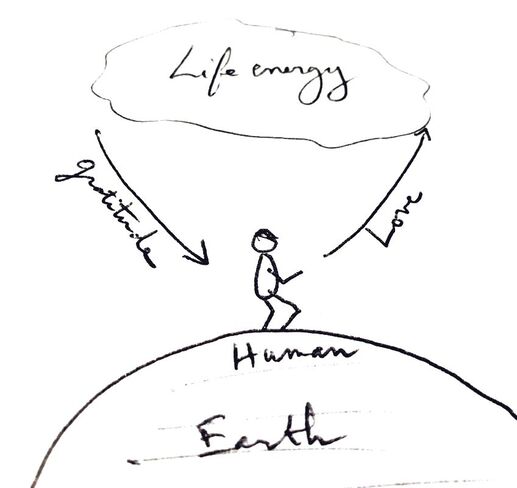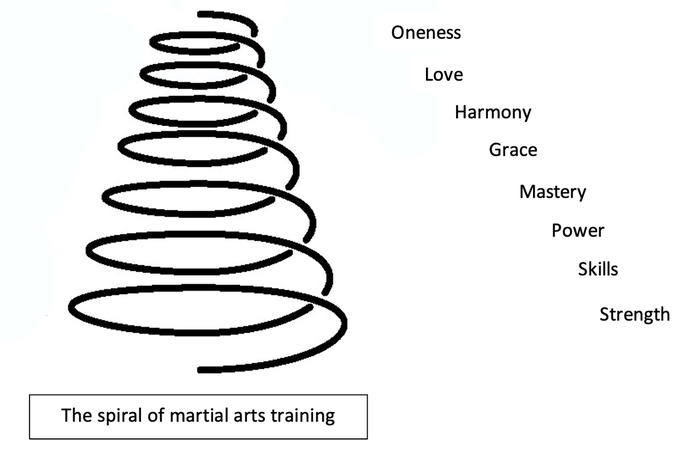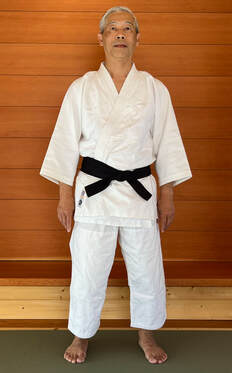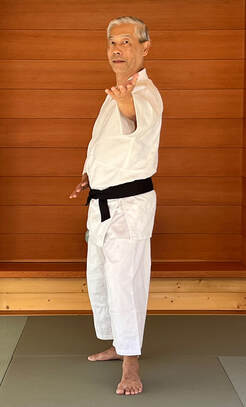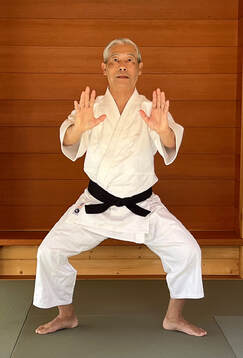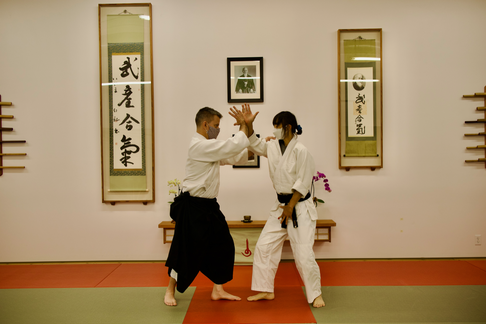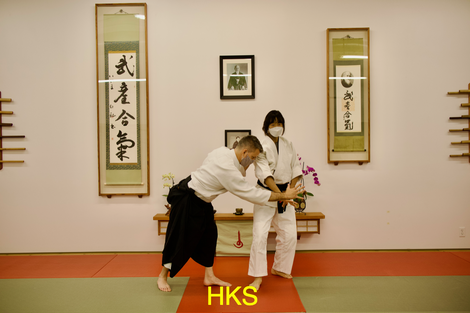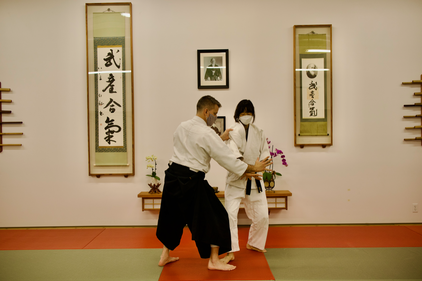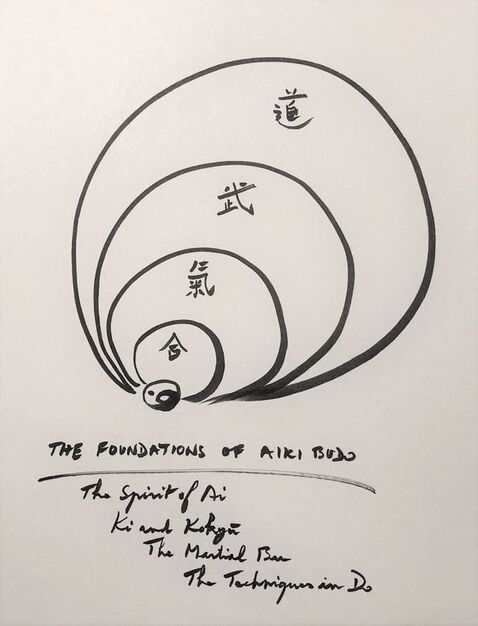|
|
|
9/10/2023 0 Comments Trains of ThoughtPart 2: The Practice of Biotensegrityby Dr. Paul Williams, PT, DPT Since I was around sixteen, my body’s fascial connections have been forged and tempered through training in aikido. In the last several years, it has also been developed through tai chi and Shindo Yoshin Ryu. Although the role of these trainings in forming an interconnected body is not yet well understood, research has found that strengthening the fascia's biotensegrity is how we create the interconnected body. What is Biotensegrity? “Current biomedical theory is based on the laws of classical mechanics as formulated by Galilei, Newton, and Hooke, etc., and applied to the behavior of man-made machines from the 17th century and it has remained largely unchanged ever since.”- Stephen M. Levin (2020) For a long time, it was always accepted that our bones stack upon themselves and the tissues attached along with gravity cause compressive forces from the top down. This classical understanding of the body’s structure is much like how buildings are made or how we see any inanimate object’s structure based on Newtonian physics. I was only taught this way of looking at the body in physical therapy school. Subsequently, this is a limited view that has run up against recent research suggesting a more nuanced approach. “Anatomy is not a collection of isolated bits that operate in a local piecemeal-like way but a complex, fully integrated, nested modular arrangement where the function of each part is dependent on all those surrounding it.” -Stephen M. Levin (2020) When we calculate isolated forces acting upon a single joint or the intrabdominal pressure of a heavy weightlifter, we conclude that if it weren’t for the supportive structures attached, we’d have catastrophic failure of these tissues. So, what would be a more accurate way of thinking about forces acting on the body? Instead of thinking piecemeal about the square frame in which buildings are made, we should be thinking about triangles and how truss designs work. Truss designs operate in three-dimensional space and evenly distribute strain throughout the complete structure. The best way to demonstrate this concept is to study the shape and function of the tensegrity model and its many applications. Above is a tensegrity model created by Buckminister Fuller’s student, Kenneth Snelson. Here we see struts and a tensional network of bands that create a collection of three-bar tension triangles. This provides a very stable structure created by a balance of tension and compressional invisible forces. Think of the struts being like bones which transfer a lot of the compressional load and the bands being soft tissue like fascia, tendon, ligament, etc., which store energy and help transfer force via its elastic properties. The concept of biotensegrity adds to our understanding that instead of bones (struts) fully compressing on top of each other, they are floating or being pulled up in support by the fascia and soft tissues (bands) much like the model above. Each section is fully integrated with the whole giving it both elastic and compressive qualities. For example, if one provides pressure at one end, then that force will be transferred from one joint to another creating a temporary deformity with stored energy that returns to its original form once released. Below is a model created by artist Tom Flemons that illustrates this concept of elasticity and how the lower extremity’s structure maintains most of its shape and function even with vector forces pushing from the outside. For a more in-depth look at biotensegrity models work check out this video by Thomas Myers. Clinically, this way of looking at the body could change the physical therapy field for the better. We know that a patient’s negative beliefs about their body’s resiliency can be a predictor of chronic pain. If true, then why do we still educate our patients with a skeleton model as if this is an acceptable and accurate way of looking at the body? We could be triggering our patients to catastrophize their injuries when we look at the body as a fragile compressive structure that is doomed if they put too much stress on the spine or a joint. When we just look at a skeletal model and explain the causes of disc herniation of the lower back or the torn meniscus of the knee, we negate an important understanding of how a healthy and integrated fascial system can offload that stress. Therefore, I believe we should be teaching a more accurate model that involves a narrative of resiliency and integrity. The Biotensegrity of Ukemi Most of aikido’s curriculum is based off Daito Ryu Aikijujitsu, which grounds its techniques in principles of absorbing and redistributing force through an integrated structure. These principles require what I would call the aiki-body. This type of integrated body allows us to be able to absorb force with proper alignment from a point of attack through our body without interruption when performing or receiving a technique. This does not just mean proper postural alignment. This also implies that our connective tissues, like our fasciae, require to be aligned as well. Below is an example of the effects on fascia with exercise vs sedentary activity. The right demonstrates a multi-directional hodgepodge of fibers which leads to a loss of springiness and elastic recoil. To the left we see neatly aligned fibers forming a latticed structure needed for proper elasticity. Without this alignment our biotensegrity structure loses its ability to support and respond to pressure placed upon it. “The founder clearly stated that the basic technique, ikkajo through yonkajo, is katsutori (which refers to the extraction of the pulp like sediment that is a byproduct of the production of Japanese alcohol, e. g. shochu, sake, et cetera.) In other words, through the performance of basic techniques, we remove the sediment or residue (by removing the tension) built up in our partners joints. Therefore, contrary to popular belief, these techniques are not for the purpose of knocking down others. I heard the Founders say this and use the term kasutori only once but now upon reflection i realized that i was lucky to have had the opportunity to hear this.” -Sunadomari Kanshu This quote, taken from Ellis Amdur’s book Hidden in Plain Sight, is by Sunadomori, a personal disciple of O-Sensei in aikido and Omotokyo. It’s a revealing statement about the purpose of aikido training and the concept of kasutori. According to O-Sensei, to create a body fit for enlightenment, one must perform these techniques to take out the pulp. This is a great analogy for what fascia looks like in the sedentary example. It’s so funny that O-Sensei didn’t know how right he was. “Uke is also provided with the opportunity to stretch and strengthen his/her joints and connective tissue. Connective tissue becomes stronger through load bearing and also through specific ways of stretching coupled with breathing. Similarly, this is what can happen to the body when taking properly exerted and properly received aikido technique.”- Ellis Amdur (2000) According to Amdur Sensei and recent research, the primary modality for achieving the aiki-body is through ukemi. Therefore, it is the nage/tori’s role to soften our joints or in other words to take out the stiffness/pulp and make them more pliable and elastic. Amdur likens nage’s role to uke as a tool to further temper the body like fine metal, a process known as tanren or forging. To do this well, we must look at a specific type of muscle contraction and its importance in receiving a technique. “On days following heavy eccentric exercises until fatigue, a substantial thickening of the deep fascia can be detected using high- resolution ultrasound imaging.” - Nosaka, K. & Lau, W.Y. (2018) Receiving a technique strengthens the fascial track connection by slowly stretching uke from their hands down to their toes in an action called eccentric contraction. This action stimulates not only the growth of muscles but also the strengthening of connective tissues via stretch that can reinforce the myofascial chains as mentioned in part one. In order to achieve this, it’s necessary to have proper ukemi that stays connected to nage and not to throw themselves or move ahead of nage’s technique in anticipation and without unnecessary cause. All too often, ukemi in modern aikido gives nage the technique without properly receiving it resulting in a flashy display of acrobatics. Amdur Sensei warns against uke’s throwing themselves to make their teachers look good. This kind of ukemi is empty and without benefit to either nage or uke. Consequently, nage may develop an inflated sense of ability and uke never builds up their body to properly receive or perform techniques. This type of ukemi would leave so much benefit on the table. Based on the advantages of eccentric training we can see that aikido’s nage/uke relationship has something unique and valuable to contribute in strengthening not just our muscles but potentially one’s fascial structure. As shown in the tensegrity models, with eccentric contraction, energy is stored in fascia via its elastic properties only to be restored to its original shape once released. This release can be expressed in the form of a high fall, roll, or as mentioned in the nage/uke relationship link, a reversal. Biotensegrity of Techniques “There is no real difference between structure and function; they are two sides of the same coin. If structure does not tell us something about function, it means we have not looked at it correctly.” – Andrew Taylor Still, 1899 As said in part one, according to the Anatomy Trains Theory, the function of myofascial chains is to allow us to absorb and transfer energy from outside forces. If this is true, then I hypothesize that these chains, if strongly connected, can also allow us to generate force more efficiently through our bodies and not just absorb it in our ukemi. Since our fasciae are what gives us shape and structure, then one can see from the outside if our form and function are correctly expressed through techniques. To study this, we will focus primarily on the myofascial chains discussed in part one. There are many tracks in the body connecting the left and right along with same side connections. My focus is on one chain that connects us contralaterally from the pinky finger all the way to the opposite foot as described in the “Anatomy of the Roll”. I call this the kokyu chain. We find this cross-body connection utilized in just about every technique that exists in the aikido curriculum. This in my view is the most important track that facilitates the stability and capability to transfer power needed to perform techniques such as kokyuho or iriminage. That’s not to say that there couldn’t be other chains just as important in these techniques. My purpose for this inquiry is to gain a better understanding of the recent research on fascia and its implications toward my martial arts training. Therefore, this model was chosen to shed light on a new way to view body mechanics for a foundational technique in aikido. Take a look at morote dori kokyuho above. Newens Sensei is dropping down from his center, connecting to the back leg, and extending upward with his opposite left arm through his little finger. The same facial track that supports the roll is supporting my weight and leveraging me upward in a two-way street. From a biotensegrity lens, Sensei is absorbing my weight and force with ease from his left arm and distributes it throughout his body including down to the opposite leg. In the picture above, I have just pushed off with my left front foot with arms raised open and stepped behind Newens Sensei. Force vectors are traveling from muscle contractions of the right upper extremity while ground reaction forces are traveling up the left lower extremity. Both vectors meeting in the center of my body creating balance and stability. Both examples utilize a principle in biotensegrity called structural effect where movement at one end of the body impacts elsewhere in the body. Above, we have another beautiful example of a technique that more closely resembles the front roll. Grace Powell is utilizing the integrity and power of the kokyu chain by extending through her little finger with an outstretched and internally rotated left arm and a grounded back leg. In this posture, she is exerting and transferring energy through her body's myofascial structure to provide stability and force for the throw. All the while, she can support her uke as he is in the air performing a high fall. None of this would be possible without proper shape and function of the interconnected fascial lines and the rolls that helped form the same myofascial track. Biotensegrity of Aiki-Bukiwaza Another way to create tensile strength in the body’s fascia is through weapons practice. In aikido we have aiki-ken and aiki-jo practice made specifically to strengthen our taijutsu. This is done especially well through the solo practice of suburi. Just like in other kenjitsu arts, when we tightly grip with the little finger and ground our opposite back foot, we provide a closed kokyu chain connection to the ground and allow for the ability to stop the strike parallel to the ground with ease. We finish this strike through a wringing of the wrists otherwise known as shibori. This locks our wrist structure into a close packed position that hypothetically allows the force of the bokken strike to be evenly distributed from our hands down to the feet. “This wringing is exactly the same tonus that you should do with suburi, repetitive swings with a bokken (perhaps the most important purpose of suburi within aikido or any other martial arts striving to train internal strength). -Ellis Amdur (2000) Striking is not to be done with excessive force. One needs to be relaxed enough to allow the fascial structures to absorb the force of the strike instead of our elbows or shoulders. The clear benefit of weapons practice is found when we perform taijutsu techniques with this same tensile relaxation. This is how and why weapons training is so important. It creates the skill of attaining good resting tone in our tissues when gripping an object so that we may use the body’s fascial structure to exert or distribute force throughout. Conclusion Understanding the fascia’s integrated structure, its biotensegrity, and how it relates to our aikido practice has been a big eye opener for me. For many years I've heard about cross-body connections and how important they are, but I never really understood how our body is connected. With just focusing on the kokyu chain, I've discovered many different aspects of my training that were starring me directly in my face. One of which was the importance of ukemi. I've written about how ukemi can make your muscles stronger through eccentric contraction. But my understanding was so myopic. Physical therapists are very good at reducing the whole into many different parts. However, we are not so good at seeing the body holistically unless we've adopted the fascial biotensegrity paradigm. Since doing this research, I can see how aikido is so brilliantly set up to forge the body's fascia as well. I also appreciate another reason why ukemi practice is so important. The significance of ukemi also translates to the form and structure of performing techniques. Much of the shapes and cross body connections required to have proper ukemi are needed to be an effective and efficient nage. Lastly, but not least of which, was the exciting discovery that the kokyu chain starts at the pinky finger which is exactly where we grip tightest for stability in the bokken strike. With consistent practice, we can create a relaxed resting tone that allows for absorption of the strike to be dissipated throughout our body. Whether we are holding a bokken or an arm, this practice allows us to be grounded, relaxed, and stable with our cross-body connection. Sometimes I wonder, did these great martial artists know on an intuitive level the existence of these connections? Was this part of a secret old school teaching lost to time? In my practices, I’ve often asked why do it this way or that way. Now my new understanding of the fascial system allows me to see the answers to those questions I’ve had in Tai Chi, Aikido, and Shindo Yoshin Ryu. I hope it does the same for you. Happy training! Works Cited Myers, T. W. (2014). Anatomy Trains: Myofascial Meridians for Manual and movement Therapists. Elsevier Ltd. Schleip, R., Findley, T. W., Chaitow, L., & Huijing, P. (Eds.). (2021). Fascia: the tensional network of the human body-e-book: the science and clinical applications in manual and movement therapy. Elsevier Health Sciences. Ajimsha, M. S., Al-Mudahka, N. R., & Al-Madzhar, J. A. (2015). Effectiveness of myofascial release: systematic review of randomized controlled trials. Journal of bodywork and movement therapies, 19(1), 102-112. Schleip, R. (2015) Fascia in Sport and Movement. Edinburgh, UK: Handsping Publishing. Schleip, R., Bayer, J. (2021) Fascial Fitness: Practical Exercises to Stay Flexible, Active, and Pain Free in Just 20 Minutes a Week. Berkely: North Atlantic Books/ Lotus Publishing. Kjaer, M., Landberg, H., Heinemeier, K., Bayer, M.L., Hanse, M., Krogsgaard, M.R., & Magnusson, S.P. (2009) From mechanical loading to collagen synthesis, structural changes and function in human tendon. Scand J Med Sci Sports. 19: 500-510. Laozi., Feng, G., & English, J. (1997). Tao te ching. 25th anniversary ed. New York, Vintage Books. Wilke, J. (2021). Mechanical force transmission across myofascial chains. Fascia in Sport and Movement, 147. Levin, S. M., & Martin, D. C. (2020). Biotensegrity-the mechanics of fascia. Wertli, M. M., Rasmussen-Barr, E., Weiser, S., Bachmann, L. M., & Brunner, F. (2014). The role of fear avoidance beliefs as a prognostic factor for outcome in patients with nonspecific low back pain: a systematic review. The spine journal, 14(5), 816-836. Amdur, Ellis (2000) Hidden in Plain Sight: Esoteric Power Training Within Japanese Martial Traditions. Freelance Academy Press
0 Comments
7/20/2023 0 Comments Sente and Awase in Aikidoby Hoa Newens At the 2023 TAA Gasshuku at Lake Tahoe, we worked on shomenuchi ikkyo in a class and I explained how the nage needs to initiate the technique by extending her arm toward uke’s face to draw uke’s arm into the movement. I noted that this is similar to the concept of sen no sen in Budo and provided a brief explanation. Below is a more in-depth explanation. The Concept of Sente In a competitive environment such as war, martial arts and game of strategies, taking the initiative is often the preferred winning strategy, since this first action serves as a preemptive move that forces the opponent into a restricted range of predictable defensive reaction, giving one a strategic advantage. For example, initiating a linear movement toward my opponent’s face with my arm would likely draw her response to that particular space; she would have to either block it, move to the right or the left of duck down. Her movement will likely be localized in that space in front of her face. Based on this knowledge I gain more control to launch my second move. It is not very different from throwing bait into the ocean to attract a school of fish then dropping a net onto them. In the strategy game of Go which dated back to the 4th century BCE in China, the ability to play the initial move, Sente (先手), compels the opponent to play the after-move, Gote (後手), and provides a better chance to control the opponent’s movement throughout the game. The concept of sente and gote evolved further in the martial arts environment, into the concepts of go no sen, sen no sen, and sen sen no sen to define various strategic timing of movement. In go no sen, one intentionally lets the opponent attack first then seizes his opening to make one’s move. For example, in in the basic version of Aikido Kumijo No. 8, as soon as the attacker starts the hayangaeshi strike one seizes the opening with a thrust to the chest. In sen no sen, one initiates the first move to elicit the opponent’s first move, then seizes control with the next move. The initial move can be viewed as a pre-emptive move to restrict the opponent’s options. For example, one can initiate a strike to generate a parry from the opponent, upon which one would control the parrying arm, similar to shomenuchi ikkyo technique in Aikido. Another example is the version of shomenuchi iriminage referred to as yama biko no michi (the path of the echo in the mountain), in which one initiates a strong extension toward uke to draw out his forward strike then one enters with iriminage. In sen sen no sen, the timing is before sen no sen, that is before any movement is even conceived. One would draw out the attacker’s intent to strike and suck him into one’s sphere, as when O Sensei states, Opponents confront us continually, but actually there is no opponent there. Enter deeply into an attack and neutralize it as you draw that misdirected force into your own sphere. Morihei Ueshiba This technique is non-physical and requires one to be aware of the opponent’s intent and draw it into one’s center then neutralize as it manifests as a movement. For a glimpse of a similar technique refer to the scene in The Seven Samurai movie when during a recruitment and testing of potential fighters, a master ronin enters the testing hall and stopped just before the doorway, his heightened awareness sensing the presence of evil intent behind the door. Is Sente Relevant to Aikido? Sente is often used in competitive Budo, such as judo, karate and kendo. As can be seen in the foregoing examples of Sente in Aikido techniques, this concept can help to point out the correct timing for these techniques. It helps the student perform the movement at the right time to achieve harmony with the uke. However, except for the case of sen sen no sen, the concepts of sente and gote exist in reference to linear time and presuppose that our consciousness operates in a sequential manner. That is, at moment #1 I make a move, at moment #2 the opponent is aware of the move and responds to it. This is a limitation that does not provide for one person to be instantly aware of the other’s intent with the result that both persons initiate concurrent movements that have the potential of neutralizing each other. The latter case represents awase (合わせ), as further described below. With respect to the reason for engaging each other in a martial encounter, O Sensei pointed out that there is no opponent, there is just a person with misdirected thoughts, or misplaced heart. We do not fight each other, we do awase with each other, and neutralize the evil in our hearts. There are no contests in Aikido. A true warrior is invincible because he or she contests with nothing. Victory means to defeat the mind of contention that we harbor within. Morihei Ueshiba O Sensei explained further: A real warrior puts an end to all conflict and keeps people from resorting to arms to settle disputes. That is the mission of a warrior. A warrior strives to create inner and outer harmony, unity and peace throughout the world. The warrior knows that human beings contain the entire universe within them. That is the ultimate principle, the rationale that guide their actions. To enact the peace and unity of the universal mind is the purpose of Aikido. Morihei Ueshiba, The Secret Teachings of Aikido If my purpose is to create peace and harmony, I do not need to win, therefore, how relevant is it for me to make the first move? I just need to be able to come together (awase) with my counterpart and resolve the conflict amicably. Let us remember that the purpose of Sente was to win over and conquer the other party; if we achieve this purpose and rejoice over the other’s defeat, wouldn’t we have the same mind of discord as the other person? Sente is relevant for competitive endeavors. Whereas, in an environment where competition does not exist, it loses its meaning, though it may have some usefulness in the early training stages. Indeed, I have come across scant reference to this concept by O Sensei or Saito Morihiro Sensei., Below are some doka (songs of the way) composed by O Sensei that may give a glimpse of O Sensei’s timing, as compiled by John Stevens in The Essence of Aikido – Spiritual Teachings of Morihei Ueshiba, Kodansha International, 1993. (No. 79) If you want to disarm your foe, seize the initiative step in and cut decisively! (No. 82) When your opponents run in to attack, take one step aside and immediately cut. (No. 87) Letting the warped foe strike at my form, I slip behind him and counterattack. (No. 88) Seeing me before him the enemy raises his sword to strike, but by that time I already stand behind. O Sensei gave this example about how to read the opponent’s mind when explaining the concept of odo no kamuzawa (小戸の神業): Aikido is odo no kamuzawa. If you are linked to the void and emptiness, the vibrating patterns of the universe will be reflected on your inner mirror. Here is a practical example. An opponent comes walking toward you; if you are spiritually sensitive to his vibrations, you can read him completely even before you see his form. With good aiki, you can instantly sense an opponent’s movement and deftly avoid any attack. If an opponent appears right now, you must be ready. There is no room for error. This is odo no kamuzawa. Morihei Ueshiba, The Secret Teachings of Aikido, Kodansha International, 2007 The Timelessness of a Calm Mind At the ultimate level of martial arts, the martial artist sees through the opponent, and physical timing becomes irrelevant, as can be gleaned from O Sensei’s own accounts of two incidents, as noted by the Second Doshu, Kisshomaru Ueshiba, in The Spirit of Aikido, Kodansha USA, 2012. The first incident occurred in 1924 in Mongolia when O Sensei’s group was attacked by Chinese soldiers: I couldn’t move from where I stood. So, when the bullets came flying towards me, I simply twisted my body and turned my head. Soon, when I concentrated my vision, I could intuitively tell from which direction the enemy would fire . . . I could see pebbles of white light flashing just before the bullets. I avoided them by twisting and turning my body, and they barely missed me. . . but suddenly I had an insight into the essence of Budo. I saw clearly that the movements in martial arts come alive when the center of ki is concentrated in one’s mind and body, and that the calmer I became, the clearer my mind became. I could intuitively see the thoughts, including the violent intentions, of the other. The calm mind is like the quiet center of a spinning top; because of the calm center, the top is able to spin smoothly and rapidly. It almost seems to be standing still. This is the clarity of mind and body [sumi-kiri] that I experienced. The second incident occurred in 1925 at O Sensei’s dojo in Ayabe, when he was challenged by a naval officer armed with a sword. It was nothing. Just a matter of clarity of mind and body. When the opponent attacked, I could see a flash of white light, the size of a pebble, flying before the sword. I could see clearly that when a white light gleamed, the sword would follow immediately. All I did was avoid the streams of white light. Therefore, for advanced training in Aikido, rather than striving for sente to achieve victory, we should be striving for clarity of mind to achieve awase. Awase In Aikido, timing and power are meaningful only in the early stages of training. In advanced training, what matters is whether the training partners have come together to achieve awase (harmony). What matters is not before (sen) or after (go), but together (ai). Aiki is the harmonizing principle that ties the elements of the world together. It unifies the spirit. It binds things as one. Morihei Ueshiba, The Secret Teachings of Aikido As soon as practicable in their training, Aikido students strive for awase, which in the beginning manifests as synchronization of movements. Both the nage and uke must remain fully alert through the engagement to keep in sync. This is a most important distinguishing characteristic of Aikido training as compared with other competition-based martial arts: both training partners work together to achieve harmony, not against each other to achieve supremacy. At a later stage, Aikido students add to their awase by syncing their ki (energy) flows, reducing gaps and starts, and keeping the movement smooth, minimizing any violent impact. The two training partners work together in a respectful and trustful manner during the performance of a technique; one does not bash the other, who blends rather than trying to escape and fight back. This is the training stage known as ki no nagare (blending of ki). Ultimately, beyond technical proficiency, the advanced Aikido students must go beyond timing and physical blending and allow their awareness to create the appropriate setting or movement to respond to a challenge. This training stage is known as Takemusu Aiki. In Aikido, the techniques are constantly changing, for change and adaptability are part of the essence of Aikido. I am always training and studying in that spirit, constantly altering the techniques according to the circumstances . . . Aikido has no forms. It has no forms because it is a study of the spirit. It is wrong to get caught up with forms. Doing so will make you unable to respond with proper finesse. Morihei Ueshiba, The Secret Teachings of Aikido For purpose of understanding the meaning of the principle of awase in Aikido, we can distinguish the following stages. Tai no awase Body blending with body. At this beginning stage, students strive for harmony of physical movements. Timing and angles are important. The result is a safe and peaceful exit for all concerned. This stage represents at least the first few decades of training, through the godan level. Ki no awase Energy blending with energy. At this stage joining our energy with that of our training partner is the practice goal. This stage includes ki no nagare waza. Up to this stage, using sen no sen in training helps the students go beyond the reactive timing and acquire the ability to extend ki energy to initiate an engagement, such as when practicing shomenuchi ikkyo as described earlier. Gradually physical timing becomes less relevant, and merging ki flows becomes more important. Kokoro no awase Heart blending with heart. This is an advanced level practice in which one seeks harmony of feelings and intent, with or without movement. O Sensei instructed that we should envelop the opponent with our kokoro (heart/consciousness) then we can feel their heart and lead them to the right place. As the awase of heart controls, awase of ki flow follows, and awase of movement results; this is awase from the inside out. This can sometime be observed as a harmonious interaction between senior advanced students and their sensei. Takemusu Aiki Blending with Aiki to create life. At this ultimate stage, one merges with Aiki, the spiritual life force of the universe, to create, physically, mentally or spiritually. One would move, breathe, and feel coherently with all things. These stages are described herein to help with the understanding of the concept of awase, though they are not practical aids for training. Further discussion on this topic can be found in another essay The Ai of Aikido . In summary, though sente and gote are concepts that are useful in the early stage of Aikido training, experienced students need to rid themselves of the desire to win or to be first, and focus on the desire for awase, to come together with others through a calm mind. This is the way to reach the heart of Aikido. Hoa Newens July 20, 2023 By Dr. Paul Williams, PT, DPT For this series, I will focus on how fascia group together muscles, myofascia, into networks called tracks, lines, or chains that can provide a transfer of force across the entire body. For part one, we will look at how these chains support the body during forward and backward rolls. In the second part, I will explore how fascia can assist and potentially be strengthened as a biotensegrity structure when performing and receiving aikido techniques. In the last part, I would like to discuss internal practices and how they can help form healthy fascia. Beginning to Roll A common Issue with learning how to roll is fear. Most who have never rolled on a mat in their life have a fear of hurting themselves. As an aikido teacher, it’s tough to convey the common phrase “there is nothing to fear but fear itself” when new students are first faced with the ground below them. But when we educate them on the purpose of rolling, how their bodies are made to roll, and how it strengthens the body, then I believe we can sequester some of that fear. Hoa Newens Shihan likes to say, “The mat is our first and best uke because it is unchanging and always providing us with consistent feedback.” I would like to add that the mat is our best physical trainer. Rolling molds our body’s fascial system into the shape of a circle which is an essential shape in aikido techniques. To have our rolls smooth and without interference from our bodies, we need to round out the edges and therefore evenly dissipating the ground reaction forces from the mat. What is Fascia? “One could also describe them as fibrous collage-nous tissues that are part of a body-wide tensional force transmission system.” (Schleip et al., 2012). Luckily, we come equipped with a ubiquitous protective layer just under our skin and throughout our body called fascia. Anatomy Trains by Thomas W. Myers is a wonderful book that took me down a rabbit hole of research on the topic of fascia. Fascia is the connective tissue that covers, shapes, and protects every organ, muscle, joint, tendon, adipose tissue, blood vessel, lymph node, and nerve fiber in our body. Fasciae are mostly made up of collagen, elastin, and a viscous fluid called hyaluronan which are embedded in a matrix network. This matrix is both superficially under the skin and deep in the muscles. It connects and shapes muscle groups across the entire body from front to back and laterally from one side to another. These tracks or chains provide support, transfer force from muscle contraction, and protect us from external forces. In modern medicine, fascia has been one of the most understudied tissues of the body. It was quickly discarded as gristle in anatomy classes for decades due to a lack of tools that could measure fascia. Clinical Implications of Fascia Now that we have better imaging technology, there is no doubt that fascia is an important part of our lives and can be the cause of function or dysfunction. If we don’t move dynamically in life, maintain proper hydration, and practice proper physical or movement therapy, then fascia can become dysfunctional. In my practice as a home health physical therapist, I’m exposed to how fascia can pull my patients down into postures that permanently cause movement dysfunctions. “A man is born gentle and weak. At his death he is hard and stiff. Green plants are tender and filled with sap. At their death, they are withered and dry. Therefore, the stiff and unbending is the disciple of death. The gentle and yielding is the disciple of life.” - Lao Tsu (Tao Te Ching, Chapter 76) The most common example in my practice is that of an elderly person that sits for most of the day in a wheelchair, recliner, and/or ambulates stooped with a walker. All these positions maintain the torso and hips into flexion and restrict extension for proper upright posture. My patients with this condition complain that they feel like they are being pulled down. According to the Tao Te Ching and the fuzz speech, without daily counter action into extension via stretch of the anterior chain, or as Myers would say the “superficial front line”, we are at risk of this frontal fascia tightening and solidifying us into this forward position, as you see on the picture below. Over the last ten years, myofascial release therapy has become a fast-growing approach of physical therapy. This is due in part to the recent discovery that there are more nociceptive (pain), interoceptive (internal awareness), and proprioceptive (position awareness) receptors found in fascia than in muscle fibers. Leading researcher, Robert Schleip, calls fascia the body’s largest sensory organ with an estimated 250 million nerve endings. That’s six times more richly innervated than our muscles. It makes sense that more injuries occur in the connective tissue including deep and superficial fascia than muscle bodies themselves. This has been proven by studying the thoracolumbar fascia where there is a high concentration of myofascial tissue. It was discovered that this fascia is the most pain sensitive tissue in the lower back. These nerve endings run up the spinal cord from the tissue to the insula cortex of the brain. This area of the brain is responsible for one’s sense of self and emotional state, and this may be the reason why one’s emotional state seems to be correlated with episodic chronic low back pain. Modalities such as cupping, scrapping, and acupuncture in the form of dry needling have recently been adopted by the physical therapy profession from traditional eastern medicine. More and more therapists are using fascia-based therapies when looking at patients with movement dysfunctions or athletes wanting to optimize their performance. I think we all may remember Michael Phelps at the 2016 Olympics. He and many other swimmers testified that they could get more reach with their swim stroke after a cupping session. This can potentially give an edge in a sport where one hundredth of a second is the difference between winning and losing. Personally, I’ve had to use cupping for shoulder pain. Several years ago, after about 3 years of neigong (internal practice), I was able to relax my shoulder at will, but I could still feel tightness and pain superficially to the muscles. After one session of cupping from a physical therapist, those fascial adhesions created from a previous shoulder injury were stretched and able to become elastic again. This resulted in an instant relief of discomfort and rigidity which has lasted ever since. This presentation provides a visual demonstration on the importance of a healthy fascia system and how fascial injury can lead to dysfunctions in everyday mobility. As a result of this understanding, physical therapists can no longer look at musculoskeletal disorders in the same way. We cannot just hyperfocus on knee or shoulder pathologies and only provide examination and treatment in that one local area. With a connected fascial matrix approach, it is now more appropriate to examine and possibly treat the area above, below, or across from the orthopedic pathology. As an example, for the injured shoulder, we must assess the opposite hip. For an injured knee, we ought to look at the ankle or hip above to have a complete clinical framework for what is going on at the site of pain or dysfunction. Strengthening Fascia with Rolling So, if we have these healthy fasciae that support us in our movements, then how do we make them stronger and more functional? They aren’t like muscles in that they don’t immediately contract at the will of our nervous system, but they do stiffen more longitudinally and some transversally to local muscle contraction. Fasciae can also respond and strengthen to strain and stress through stretch and/or compression placed on them much like the bones in our body. Unlike bones and muscles, fasciae are not isolated to a specific area of stretch or muscle contraction. In fact, it has been observed when the latissimus muscle is dynamically stretched, it affects and stiffens the opposite lumbar and hip fascia. For muscle contraction, a seated anterior pelvic tilt causes small cranial displacements of fascia. Just like muscle or bone, the more use a myofascial chain gets, then the stronger it becomes. This is done by tissue remodeling when fibroblasts lay down collagen, making the connected myofascial chains across the body more resilient and stronger. “Although the limbs are bony and angular, practitioners of martial arts can often make it look as if the body is made of India rubber as they roll effortlessly along the legs, arms, and trunk.” (Myers, T. W., 2014) Interestingly, the author of Anatomy Trains has a background in aikido, and he uses the aikido roll in his book to show how a myofascial chain helps support this exercise. The forward roll lightly starts contact at the little finger. Then it moves along the ulna and triceps to cross the rotator cuff and finally to the latissimus. This is what’s known as the Deep Back Arm Line. From the latissimus, it connects diagonally to the Back Functional Line supporting most of the body’s weight crossing the back to the opposite hip. The final track of the roll moves down the Lateral Line of the leg all the way to the foot when it contacts the floor to stand back up. Below is an illustration of how this occurs. “Fascial tissues are seen as one interconnected tensional network that adapts its fiber arrangement and density, according to local tensional demands.” (Schleip et al., 2012). The definition above describes a quality of biotensegrity. More on this subject will be discussed in part two, but in general it describes our body’s ability to balance compressive and tensional forces from one end to another. As you can see, the roll is fully supported by three lines of fascia making one track or chain from the tip of the pinky finger all the way to the contralateral leg. The stretch and compression of this track during our front and backward rolls will strengthen our cross-body connection. Hypothetically, the more rolls we do the stronger our connections can become. Robert Schleip, a leading researcher on fascia, devised a four-dimensional model for how to properly train fascia. These dimensions correspond to the principles of function of fascia which include shape, movement, communication, and supply. Not surprisingly, the roll covers all four functional dimensions in his criteria. The first function is expressed by the “Stretch” of our chains when preparing for our roll by creating the shape of a circle. We crouch down rounding our shoulders and back by internally rotating the arms and reaching forward in the shape of a circle. If we don’t do this stretch first and maintain the tensile elasticity throughout the roll, the shape will collapse and can result in injury. The second function of fascia is movement via “Spring” action. That is utilized at the beginning of the roll to create momentum which carries our bodies through a roll all the way to a standing position. If we don’t push off with the back foot and spring forward, we can put too much pressure on the circular shape created by our arms and collapse our structure. This is usually demonstrated in the barrel or sideways roll. The next function is “Supply” where we revive and rejuvenate the fascia. Schleip uses the example of a foam roller where compressive forces on the fascia provide a self-massage. We do the same with the compressive ground reaction forces when we contact the mat. This is a benefit for fluid exchange where metabolic waste in the fascial matrix is replaced with fresh blood plasma which can assist in reducing inflammation.
The last function is to “Communicate”. Our bodies communicate with us by feeling where our center is in space in relation to the mat during the roll. Like Newens Shihan has said, “The mat is our best uke”, because we are feeling where our circular shape is smooth or not. This in turn improves our proprioceptive awareness since we are getting real time biofeedback from the ground through our bodies. Conclusion One could say that our bodies are literally made to roll. This begs the question of how long before we see the fruits of our labor? Fascia is unlike muscle which strengthens and increases in size after several weeks of diligent strength training. In fact, an increase in fascial thickness can be a sign of pathology found in patients with low back pain. What we need are tissues that have strong tensile properties which make this metaphorical wetsuit more pliable, elastic, and less prone to injury. Fascia will take around 3-9 months before tissue remodeling becomes a reality. It's important to apply this knowledge in a way that relaxes us and gives us confidence. Rolling is a practice meant to give us a strong interconnected body over time, which allows us to transmit forces along these built-in chains. So, no need to rush it. Take your time to do it right. Through an understanding of our myofascial chains, we can now see the importance of rolls in our training. According to the Anatomy Trains theory, these fascial tracks not only support us in rolling, but also allow us to transfer and exert force through our bodies safely when performing techniques. More on this will be discussed in the next blog. Unfortunately, rolls have become less practiced and are viewed with minor importance in many dojos. This comes at the cost of not developing strong cross-body connections that can in turn perform strong and structured techniques that incorporate proper shape, dynamic movement, body awareness, and restoring tissue health. To our students, I hope those 50 rolls at the beginning of class are starting to make a lot more sense. Happy training! Works Cited Myers, T. W. (2014). Anatomy Trains: Myofascial Meridians for Manual and movement Therapists. Elsevier Ltd. Schleip, R., Findley, T. W., Chaitow, L., & Huijing, P. (Eds.). (2021). Fascia: the tensional network of the human body-e-book: the science and clinical applications in manual and movement therapy. Elsevier Health Sciences. Ajimsha, M. S., Al-Mudahka, N. R., & Al-Madzhar, J. A. (2015). Effectiveness of myofascial release: systematic review of randomized controlled trials. Journal of bodywork and movement therapies, 19(1), 102-112. Schleip, R. (2015) Fascia in Sport and Movement. Edinburgh, UK: Handsping Publishing. Schleip, R., Bayer, J. (2021) Fascial Fitness: Practical Exercises to Stay Flexible, Active, and Pain Free in Just 20 Minutes a Week. Berkely: North Atlantic Books/ Lotus Publishing. Kjaer, M., Landberg, H., Heinemeier, K., Bayer, M.L., Hanse, M., Krogsgaard, M.R., & Magnusson, S.P. (2009) From mechanical loading to collagen synthesis, structural changes and function in human tendon. Scand J Med Sci Sports. 19: 500-510. Laozi., Feng, G., & English, J. (1997). Tao te ching. 25th anniversary ed. New York, Vintage Books. Wilke, J. (2021). Mechanical force transmission across myofascial chains. Fascia in Sport and Movement, 147. 6/17/2023 0 Comments The Horse Stanceby Hoa Newens This paper provides background information on a well-known martial arts stance, the horse stance, and explains the proper way to practice it. General information on martial stances, including the horse stance, can be found in another paper, Stances in Martial Arts (https://aikidodavis.com/blog/stances-in-martial-arts). What is the Horse Stance The horse stance is a key element of basic training in many martial arts originating from Asia. It owes its name to the position of the legs which resembles that of a horse rider spreading the knees to accommodate the trunk of a horse. Its most obvious purpose is to strengthen the lower body, that is, hips and legs. There are other less apparent yet more substantial reasons to practice this stance on a regular basis that we will explain below. Why Practice the Horse Stance The spiritual connection Sentient beings are created by heavenly intelligence ingeniously combining various earth elements; hence the natural tendency of these beings is to reach back to their creative sources, heaven and earth, for sustenance. Witness, trees grow vertically downward to absorb the nutrients of the soil, and vertically upward to soak in the nourishment from sunlight and air. Scientists know this phenomenon as geotropism (or gravitropism): roots of plants gravitate naturally downward toward the earth center, while the stem is drawn upward in the opposite direction toward the sun and air. Similarly, human beings are made by divine super-intelligence combining various elements of earth, and are naturally drawn toward the motherly source, the earth, for their physical sustenance, as well as toward the fatherly source, the heavens, for spiritual inspiration. Indeed, humans instinctively know to lie down on the ground to relax and reinvigorate; they also intuitively know to gaze far into the blue sky or starry firmament to get inspiration. In the same vein, martial artists of old and other spiritual seekers discovered that they had better chance of success in their earthly endeavors when then plugged into these vast energetical reservoirs located at opposite poles, the amniotic sac of earth and the vast quantum field of potentialities of the heavens. They devised methods to root into these reservoirs, and one of them is the practice of stances, such as Zhan Zhuang (standing like a pole/tree). Of these stances, the Horse Stance was the most basic and the most down to earth (literally). The energetic connection A proper horse stance channels the energies of heaven and earth through the central energetic core and nourishes the energetic bodies (physical, etheric, celestial, causal, etc.) of a human being. That is, the correct physical stance aligns the bodies (physical and energetic) of the human being such that the central pole becomes an antenna that exchanges electromagnetic energies with the earth and the universe. The horse stance in particular favors the exchange with earthly energies that nourish and strengthen the physical and lower energy bodies, while also receiving and transmitting other higher frequency energies to a lesser extent. The horse stance is the stance that builds the martial artist from the ground up and helps him maintain this energetic connection throughout the movements. This continuous connection with the earth allows the martial artist to continuously channel earth’s energy upward through the legs, store it in the hips and discharge it through the upper limbs toward the target. Stance training in martial arts generally starts with the horse stance then bifurcates into two branches: the external martial arts train with asymmetric stances representing the typical forms of such arts, while the internal martial arts prefer training with symmetric stances focusing on the development of the energy centers, such as the Zhan Zhuang stance of holding a ball in front of the chest. In order to derive benefits from the Horse Stance, one does not need to understand how the energetical exchange takes place; one just need to hold the stance correctly, as explained below. As in most inner practice, once we have made the decision to engage into it, we should remove our petty self and refrain from interfering with the working of Nature; we just need to stand and be aware, and not try too hard. Stand with the feeling of receiving energies from heaven and earth through the central axis, anchored in earth through the legs, while ready to connect with the above-ground environment through the extended arms. The impression should be that one is rooted into the sources of primal energies and recharging the Self, while holding the outer world at bay with the extended arms. Consistent practice will create a natural space, a buffer zone, between the Self and the world, that spawns a sense of detachment from worldly affairs, and promotes inner peace. The mental training Standing still in the horse stance for fifteen minutes while the body is aching and struggling to maintain balance is a mental challenge. Yet people have done it, and it takes a lot of discipline. The hardest part is not caused by the body, but by the weak mind that is running afoul, conflicted between the need to give in to the tired body, and the desire to hold the stance longer. One solution is to focus the mind (awareness) on feeling various parts of the body and releasing unnecessary stress. In the long term, the practice of the horse stance allows one to build endurance and improve mental focus, as well as instilling a disciplined character. The physical imperatives The strength of a martial art is derived from fluid movements of the body as a well-grounded unit. However, stability and fluidity are sometimes conflicting goals, until one finds a way to train for both. Such an approach has been known by ancient martial traditions: it consists of building a strong center that is supported, and can be moved quickly, by strong legs. The strong central axis allows the body to consolidate its energy and move as one unit, whereas the strong legs foster fluid motion. The horse stance trains for both imperatives, as explained below. Standing consciously still and relaxed for long duration allows the muscular and soft tissue structure to reorganize, separating the muscles and tissues that are needed for motion from those that are needed for stability; those that are idle will drop and hang from the active ones. With continued practice, the muscles and tissues that are necessary for the stance will gradually find the perfect alignment to deal with gravity. The long-term result is that the body eventually discover an axis in its median line that supports, and connects with, all other parts. This is the central axis, which rallies all parts of the body during motion. The low height in the horse stance strengthens the muscles and tissues of the hips and legs, which form the support structure for the central axis. For example, one can feel the lower back and the quads muscles aching in a prolonged stance. The strengthening of its support structure allows the central axis to move fluidly and to immediately anchor when the movement stops. How to Hold the Horse Stance A proper horse stance has these principal characteristics:
Daily Practice The horse stance is a regular long-term practice. Below are guidelines for daily practice.
Caution The horse stance imposes a hefty demand on the lower back and hip structure. Training that is prolonged beyond natural capability will result in harm to the body. As with any internal energy practice we advise moderation and incrementalism. Go up to 70% of capability and gently push that 70% threshold incrementally. Rushing this practice will only worsen it. It should also be noted that, because it is intrinsically an energetic practice, students can achieve higher level during intense group practice which are imbued with elevated consciousness. However, it is not advisable for a student to replicate such feat during an individual practice session. Conclusion All human beings, whether involved in martial arts or not, can benefit from the practice of the horse stance. It is a relatively easy and safe exercise that promotes health and calm; trees do it all the time. For humans, a daily dose of horse stance and correct walking are the most salubrious physical activities. by Hoa Newens Acceptance and creation, the yin and yang of life. We cannot create without accepting first, For accepting rather than fighting the pain frees our energy to create a better future. We cannot accept without creating first, For creating hope and goodness in our heart helps us to accept the present suffering. Though, uncontrolled creation leads to impracticality, And impulsive acceptance leads to lethargy. How to achieve balance in this dance? Fortunately, a third party, consciousness always lives in the background, Dormant until awoken by the pain of excess, Or until activated by intent to become awareness. This is the human choice: either be woken up by painful excess, Or moderate unceasingly through God-given awareness. Awareness, when activated, Monitors the interaction between creating and accepting, By sowing the seed of creation within acceptance, And the seed of acceptance within creation, Constantly adjusting the back and forth to achieve harmony. Accept, knowing you can create a different situation, Create your deliverance, as you accept the suffering of the moment. To grow a bonsai, we meticulously shape and manicure the plant, While observing and respecting its whims and reaction. We intently listen to the plant and guide its growth, Constantly seeking harmony among heaven, earth, and human. Life is this constant and never-ending quest, In which the human soul determines its destiny by choosing and creating, While willingly accepting all forms of blessings bestowed by the supreme Grower. In this dance of life, let yin and yang take turn to play, Under the watchful eye of the supreme Grower, through awareness. As well when we train, let's take turn Receiving and sending energy, Never forgetting that the dance of life Is about balance. Hoa Newens February 14, 2023 [An ode to the bonsai grower of the Dojo] 12/2/2022 0 Comments Gratitude and Loveby Hoa Newens What Is Gratitude When a person receives something of value from another, the recipient appreciates the gift and is thankful. A young man was in need of money for the down payment on his first home and his parents extended an interest-free loan to him; he was grateful for the favor. In this example, the feeling of gratefulness was derived from the perception of added value, or net benefit that the young man received. Would he have the same feeling if the parental loan carried the same requirements and terms as available at local banks? As another example, when our family has food to eat at dinner time while the homeless population around us must beg for it from local food banks, we feel fortunate and grateful for the food. In a different scenario, we have the same food at dinner time, except that we live in an upscale neighborhood on the coast, with not a single homeless person in sight, and instead Michelin-starred restaurants abound around us, serving much better fare than what we have on the table. In this classier environment, would we have the same feeling of gratefulness? Generally, when we perceive that we have received, or have access to, something of value in time of need, we feel grateful. This feeling depends on our perception of the value of the gift and is relative. Consecutive storms dumped much needed rainfall on California arid soil; farmers are grateful, construction workers probably not. Gratitude seems to be a relative feeling that changes according to circumstances and perception. Our mind has been trained, as part of our education process, to constantly compare. In the context of our discussion, it automatically compares our present situation with a similar past situation or a current alternative. As a result, if it perceives that we are better off beyond our personal effort, such as when we have benefitted from the hand of Providence, we feel grateful. Now let us consider another type of gratitude that is rather independent of our circumstances and arises spontaneously from the depths of our being. As I was hiking the Bright Angel trail of the majestic Grand Canyon, during a pause to catch my breath, I experienced a momentary sense of gratefulness. I appreciated the fact that I was alive right then and there and wanted to thank the Lord for granting me this opportunity to be in this world. It was a fleeting sentiment that arose from the depths of my being and emerged spontaneously in a moment of no thoughts. It felt like my soul was experiencing a state of wholeness during the period that my consciousness was wholly absorbed in the task at hand, which was hiking up the steep trail then catching my breath, and now is rejoicing. The funny thing was that I did not recognize that sentiment as gratitude until later, after returning to the lodge. At the time on the trail, it was simply a feeling of lightness and full appreciation of life. Back at the lodge, when my mind reviewed and relived that feeling, it recognized it as gratitude. Gratitude turns out to be a longing for that moment of oneness just lost. It is something that I feel following a full engagement in the present. During the engagement, I am fulfilled, I have everything that I need, I do not hanker for anything. There is no sense of past, so I have no regret for having lost anything. There is no sense of future, so I have no longing for anything. I am drowned in the immensity of the moment, and I do not even feel gratitude. I do not have to be amidst majestic nature to experience gratitude. I experience it every time following a good workout in class as I get in my car to drive home; I am thankful for having a dojo with spirited students training in it. When the mind stops its chatter, the soul emerges and takes in the marvels of Nature that we call life. I feel gratitude mostly when my mind returns to reflect on the preceding moment of fullness and acknowledges that I had received everything that I needed and was totally fulfilled, and I wanted to offer thanks to the Creator for granting me this gift. In this sense, gratitude is a reckoning by the mind of an earlier mind-free engagement. Gratitude is a feeling that results from a conscious act. The true benefit to us conscious beings is the state of total presence that precedes and gives rises to gratitude. This is not to say that we should ignore the feeling of gratitude; we should acknowledge this feeling because it points us to the state of being that we long for and it reinforces our indebtedness, our connection to our Creator. However, we cannot practice gratitude; it happens to us, and we should remain alert and allow it to bubble up. What we can practice is being mindful in our daily life, and this practice will lead us to gratitude. Gratitude Generates Beneficence When we feel gratitude, we acknowledge receipt of a favor from the universe. We open and lower ourselves (as in a bow) to receive. This act of humility facilitates future incidence of gratitude. In the long run repeated instances of gratitude promote the downflow of the beneficial energy from Providence, and it responds by filling the vacuum that we create, sending beneficence our way. Gratitude and Love In the state of being that leads to gratitude, I feel complete and filled with life energy. I note that if my mind does not interfere, this life energy fills me up and naturally bounces off me to reach other beings around me, helping me appreciate who they truly are, in their entirety, with no judgment or labeling. This reflection of the life energy off me toward another being, we call it love. True gratitude generates love. When my consciousness turns inward, it feels gratitude and humility; when it turns outward it feels love and benevolence. Thus, gratitude and love are often mentioned together as the two fundamentally wholesome human feelings. Divine energy descends on earth and bounces into human beings and off them to generate gratitude and love. This is the resonance of divine energy on earth. Hoa Newens December 2, 2022 10/5/2022 0 Comments Trainingby Hoa Newenss One of the vows that a student in our dojo makes when entering the uchideshi training program is: “My daily life is my practice”. Upon completion of the program this vow is released as “My daily life has been my practice”. Everything that happened in every moment during the committed period was part of their training. Though the vow is released at the end of the program, typically lasting one year, the uchideshi generally maintains the same attitude toward training for a while, possibly through their life. Many of them have probably discovered life’s meaning in the act of training. In this essay we examine what is meant by training, what the purpose of it is, and when the training ends. What is training? O Sensei Morihei Ueshiba has this to say about training: “Progress comes to those who train and train. Reliance on secret techniques gets you nowhere.”, The Art of Peace, John Stevens (2010) Shambhala Publications In the act of training, we are re-ordering our life in such a way that we find a new meaning in every moment. Training is not normal nor natural, because it involves doing things that we do not normally do or naturally do. For example, in breath training, we seize control of the autonomic breathing function of the body and modify it to achieve a particular purpose, such as slowing the breath, breathing through the mouth rather than nose, or holding the breath longer than normal. In Aikido, we train by not just repeating the movement that an instructor shows, but we dissect the techniques into segments to understand how they relate with each other; we slow down the movement to take note of how the body feels; we pause at various check points to allow our body to absorb the energy of each move; etc. There is mental work too: we listen to comments by instructors and try to apply them; we read what others have to say; and we ponder on the essence of the techniques. Repeated execution of the movement alone is hardly training. Going to classes only is barely training. Attempting to replicate O Sensei’s movements and techniques is as bad as doing randori and jyu-waza for training. To really train we must take control of the training process and engage the totality of our being - body, mind and consciousness – and make the act of training very personal. The purpose of training Why are we training? We train to get to some place other than where we are, that provides more meaning in our life than the present. The urge to train arises from a want of satisfaction. In other words, we feel that there is something missing in our life, and we hope that by re-ordering our life activities in a certain way, that is, training, we will fill this deficiency. O Sensei explained that “The purpose of training is to tighten up the slack, toughen the body, and polish the spirit.” I understand it this way: our energies are chaotic and need to be re-ordered so that we can tighten up the slack and gain cohesion. Our body is not fully utilized and needs to be conditioned and toughened up. Our spirit is tainted with impurities and needs to be polished up to regain its pristine state. Body tempering, energetic cohesion and union with the primal spirit are indeed major stages of martial arts training. Training is a path that takes us from one state to another state: we let go of the present state and move into another state. The deeper we engage into this path, the less clear it becomes since it involves the inner workings of the human being; therefore, it is helpful to point out signposts along the way for students undertaking this journey. For this purpose, we describe below the eight rings of martial arts training along a continuum that takes the beginning student all the way to the ultimate destination. Eight rings of martial art training Martial training progresses through eight stages which bring the trainee closer to the ultimate state. It is helpful to view these stages as coils of an upward conical spiral that leads to a summit. We divide the spiral into sections labeled as “rings” for ease of reference; they are, from base to summit:
We view these stages as coils of a spiral because they are really one continuous journey represented by a single curved line that leads inward and upward to the center point at the top. At any point along the upward climb, should one choose to remain at that level, then one would circle below the destination and never reach it. A commitment to martial arts training gets us on the first ring, and we start climbing. The initial momentum gets us to a certain point up the slope then the commitment begins to wane and must be reaffirmed continuously for us to move forward and up. The climb is not arduous, but the effort is cumulative and must be continuous and steadfast. This commitment is a decision that must be made at the outset so that the trainee would not lose steam halfway up. Below we share our personal experience and understanding of this journey. Again, we note that the term “ring” as used in this essay refers to a section of a continuous conic spiral. Ring No. 1 - Strength This first ring of training focuses on building a physical body and a mental fortitude that constitute the vehicle with which we undertake the journey. For martial purpose, true strength consists of three components: suppleness, cohesion, and grounding. We explain these elements below. Suppleness/looseness. The human body is designed for mobility and all parts move together in a constant symphony of motion since birth. As our mind grows, it devises increasing complex labor-saving schemes which gradually reduce our physical activities and hence, our mobility. Machines are doing our labor and our bodies are becoming stiffer and weaker. Furthermore, the mind engages in activities that result in unbalanced energy flows (such as emotions) and eventual blockages. These blockages in turn cause further energetic stagnation and stress within the soft tissue, fragmenting the fascial network. We need to restore mobility of individual components to fully utilize the body through regular stretching and deep relaxation practices that include tendons and ligaments stretching and energy dissolving. Cohesion. If left on their own, movements of the body parts that are not part of the autonomic nervous system are naturally chaotic. However, within the body, these movements occur within a matrix of crisscrossing tissue (fascia) that connects the parts and can be trained to coordinate the individual movements to achieve a common goal. Ordering will bring effectiveness. A good way to train for cohesion is to focus on performing deliberately one simple movement at a time to the best of our ability. The earlier-mentioned practices of energy dissolving also liberate fascial tissue from energetic snags and thus enhance cohesion within the framework. Grounding. A force is only as strong as the base from which it was launched. When we push a heavy object and the ground beneath our feet shifts, or the knee joints or ankle joints give out, we will hardly be able to move the object. We need a firm base from which to launch any movement; stance training helps us acquire this solidity. We discussed this subject in more detail in another writing Stances in Martial Arts. Undertaking a training program to build up the strength of the body as explained above requires courage to start, and determination and discipline to see it through successfully. Many exercise programs lead to failure for lack of these mental components. Conversely, completing such a program helps one to build mental strength as well as physical strength. In all worthy training programs, trainees begin with basic training lasting one to two years to prepare the body for the rigors of more advanced training. This is the foundation of any serious physical training program. Advancing to the next stage before the body has acquired the necessary strength will severely hamper our progress due to an overtaxed body and high risk of injury, not unlike a short circuit resulting from putting a high load electrical current through a low resistance path. For example, in Aikido training, subjecting a 4th kyuu student to the tanren practice of nonstop one thousand suburi strikes, or asking them to work on jyu-waza, would only serve to hurt and discourage such student. Unfortunately, it is my observation that in general, Aikido teachers and schools do not offer an adequate basic training program, paying lip service to such basics as stretching, footwork, stances, ukemi, etc. These teachers tend to go directly to complex or flowing techniques in classes. Here lies the reason for our creation of the Kihon Kuren (Basic Training) that is part of the Aikido Foundations Course to get back to basics, while also sowing the seeds for higher training. In traditional martial arts curriculum, within the content of basic training are embedded seeds for more advanced training that will be developed in the advanced stages to take the students beyond the basics, to the ultimate spiritual goals of these arts. These seeds include elements such as central axis, energy centers, dynamic tension, breath work and ki flows. These advanced elements are kept at the nominal level in the basic training and are cultivated as needed in the upper levels. Ring No. 2 - Skills Once the body has attained the necessary strength to endure higher level training, we can put it through the pace with tanren practices to forge martial skills. At this stage, the training focus is on learning the techniques in the repertoire of the martial art with the goal of executing them effectively and efficiently. We are essentially creating the correct vessels (forms and movements) to prepare for insertion of contents in the next level. At this stage, training consists of numerous repetitions of the forms, both in solo and partner practice format. To achieve proficiency, students should proceed incrementally through these progressive levels:
Concurrently, the student should continue practicing the Kihon Kunren of the earlier Ring No. 1, which should gradually absorb the higher technical skills and acquire a new quality. The absorption of the new technical skills is tantamount to addition of fertilizer to nourish the higher-level seeds contained in the Kihon Kunren. Ring No. 3 – Power Skills first, then power. That is the only way to ensure safety in the use of power. Train with dummy or non-lethal weapons first before handling the real ones. Power here refers to the ability to gather a large amount of energy to generate a significant force, or to deliver a larger than normal impact, at will. At this training stage we put contents into the vessels that we created in the earlier ring; now we infuse the forms with energy. The overriding principle is that skills must precede power: the wiring must be strong and capable to receive the power that runs through the system. The Power stage includes three abilities: gather, flow and deliver energy. Gather. To gather we must be open, relaxed and centered, just like a funnel is wide open, has smooth surface and has a drain at the lowest point in the center. The low center point draws any content toward it. The three corresponding requisite skills are humility, deep relaxation and awareness of center. Acquisition of these skills is a major part of the Power training stage. Flow. The collected energy must flow, or it will create pathogenic conditions. Channeling movements toward a single purpose increases the chance of accomplishing the purpose but does not provide the control necessary to regulate the impact, that is the amount of energy being transferred. Flow, for our purpose here, refers to the ability to affect the intensity of the movement (the amplitude of the energetic wave) to achieve a desired level of impact. At the practical level, flow refers to the ability to alternately contract and relax muscles and tissues sequentially to create and propagate energy, similar to how food is moved down the esophagus. This ability requires the ability to consciously change the state (contraction or relaxation) of muscles and tissues at will and to the full extent. A good practice for flow is simply to perform movements slowly, with minimum power, and with full awareness, such as in doing a Taichi form. It is appropriate to note here that in Aikido, the emphasis on the slow and precise kihon waza results in improved control of the movement and subsequently, better flow than the flowing training in yawarakai or ki no nagare waza. Deliver. To deliver power to a specific point on our body and transmit it to another entity/body, we need to summon the energy from our reserve or other sources, conduct it through channels in the body, condense it at the delivery point then discharge it on the other entity. This is essentially the process of fajin in internal martial arts. It is useful to note that our bodily functions include natural examples of this process, such as, coughing, sneezing, sexual orgasm. The most difficult part of the process described above is the control of the discharge at the end. The average person has no or little control of the three bodily functions mentioned above. There are a number of practices that allow one to improve this control. First, is awareness of the build-up of energy as it gathers steam: this awareness allows one to depressurize this energy and annul the movement. Second, total presence at the moment of discharge allows one to become aware of this exact point; this awareness of the endpoint puts pressure on our consciousness to dissolve the buildup of energy more effectively. This is probably similar to the pressure an airline pilot feels when aware of the mountain towering over the end of the runway. In addition, this awareness of the endpoint allows one to avoid self-injury by inadvertently suppressing the energy after it has built up rather than at the outset. Effective delivery of power thus hinges on the degree of awareness of our internal energetic flows. In Aikido training, we mobilize power by engaging in tanren, special exercises designed to concentrate and channel our energies and consciousness. When doing tanren, we work on all three facets of gathering, flowing and delivering; however, it is important to remember the principles discussed above, and not dive into the tanren with full force. Tanren focuses consciousness, ki, and breath and intensifies the potential impact of these elements. Examples include regular body tempering such as tanren-uchi (suburi strikes) after every classs; doing a hundred ukemi rolls after class; etc. Tanren is not always about doing something more; it includes refraining from certain activities, such as avoiding food that may affect our health and hinder our training; or refraining from certain behaviors. Tanren also includes adopting a regimented lifestyle, such as taking cold shower in the morning, doing meditation early in the morning, etc. Ring No. 4 – Mastery To be in total control of oneself, our awareness must reach and wrap around the boundaries of this self. If we view our self as including the physical body, the mind and the energies that move through them, then we must be fully aware of the extent, the states and the changes of these components. This is no small feat, since the average person is barely aware of what constitutes his body, let alone the mind and energies. To begin the road to mastery, a martial artist must first take control of his training, rather than merely signing up at a school and following the standard training program, or just going to class. The student of mastery should sincerely assess himself, that is, his aspirations, weaknesses and strengths, then set training goals to remedy the weaknesses and capitalize on the strengths. From these goals, design a personal training program that includes daily practice. To put it in a different way, training is now becoming a shugyo (修行) or sadhana; it is the beginning of spiritual practices. The road to mastery inevitably leads one on an inward journey. Deep into the mastery stage, there is a point where the martial artist realizes that he has to gradually forsake the outer aspects of forms, skills and power in order to proceed inward. During this stage of training, it is natural for the adept trainee to feel a strong urge to unload knowledge and skills to others in order to get a sense of satisfaction from her training. It is because the knowledge and skills are cumulative energies that are in constant flux in the universe, belonging to none but available to everyone who sincerely seek them. This may be the opportune time to begin teaching. Up to this point in the climb up the rings, we engaged mostly body, energy and consciousness, whereas our heart has had little involvement. In fact, we can successfully go through the mastery stage and become an invincible warrior who keeps knocking down opponents to garner trophy after trophy. No moral compass is required to reach mastery. Mastery allows us to express who we are deep inside masterfully, while doing evil or good. Martial artists who reach this stage will act out their hearts through their martial arts. Those who believe in dominance will be able to dominate. Those who choose to go beyond will begin an inward and transformative journey in earnest. Only those whose who can transcend power and mastery and aspire toward a spiritual goal will go on and change their inner nature. It is our observation that not many martial artists are willing to let go of the achievements that they have worked so hard for. Only those who understand that the ultimate goal of martial arts is not to vanquish but to protect will be willing to let go and transcend; the rest will go on and relish their invincibility. Mastery is the stage where many martial artists are stuck at, because going further involves the annihilation of individual ego and merging with a larger consciousness; and not many masters’ egos are willing to self-destruct. As we climb up the spiral structure, the lower rings become irrelevant and are distractions that need to be offloaded, so that one can concentrate on the arduous training at hand, especially after the fourth ring, when the path leads inward into the invisible realm of training. For a small percentage of masters who have dedicated their lives to teaching the art, it may be necessary to maintain the rings below for purpose of guiding students; these are the bodhisattvas of the martial arts. In my journey up the rings, this is all I can share with some clarity. The path ahead is still long and arduous, and a bit hazy. Though I have yet to walk it, extensive experience in the past five and a half decades helps me form a faint vision of what lies in front. I share this vision below, with no certitude of its realization. I also lean on O Sensei’s words to point the way. Ring No. 5 – Grace From this ring on up, the martial artist turns the training focus inward and begins an alchemistic transformation. Unfortunately, O Sensei did not leave us specific instructions or concrete techniques to follow for this inner work. We can only glean some information from his various lectures, which are often obscure due to numerous references to mythic deities and exotic concepts. To our knowledge, there is no extant curriculum covering this phase of training. Therefore, training now becomes a personal quest. In our case, we carried our training momentum forward using O Sensei’s words as beacons and using tools from the Taoist internal energy teachings. The result of continued training at the Mastery level leads to a full awareness of the Self and all its bodies, namely, physical, energetical and mental. The training objective at this stage is to harmonize these various elements within the Self so that they function as an integral whole. The result is that the self becomes transparent and wholesome, with no internal conflict. Integration brings about efficiency and a sense of ease. Integration within manifests as grace without. Training consists of mostly internal energy work. Here are O Sensei’s words on harmony: We must no longer conduct wars. Fighting will destroy us. Consensus is the key. No harmony means no true strength. If you do not attain true harmony, all your training will be to no avail. (p 23) The Secret Teachings of Aikido, Morihei Ueshiba, Kodansha International 2007. Your mind should be in harmony with the functioning of the universe; your body should be in tune with the movement of the universe; body and mind should be bound as one, unified with the activity of the universe. Morihei Ueshiba, O Sensei Ring No. 6 – Harmony As training continues, harmony within will gradually spread outward and bring about harmony without, in the surrounding environment. The Self grows to encompass all things and beings around the trainee, spreading harmony and peace near and far. Training becomes less physical and consists of advanced internal energy work and meditative practices. O Sensei exhorted us this way: Start with self-improvement, then put one’s household in order. After that, work to improve conditions in one’s nation and strive to establish harmony throughout the world. (p 24) The Secret Teachings of Aikido, Morihei Ueshiba, Kodansha International 2007. This is an advanced state which allows the adept trainee to affect others’ state of being, hence teach, by merely being present. Ring No. 7 – Love Continued work on polishing one’s spirit together with the expanded sense of harmony created in the previous ring will bring about the realization that one’s basic nature is the same as that of other sentient beings. This compassion is likely the love that O Sensei referred to when he said that Budo is love. All living beings originate from and are manifested by love. Aikido is the purest expression of that love. It is a means to bring all people of this world together. In order to bring people together, to unite human beings with the divine, to co-evolve, we need to tap into the unlimited creative power of existence. “Bu” helps us do this. (p. 30) The Secret Teachings of Aikido, Morihei Ueshiba, Kodansha International 2007. Mankind's role is to fulfill his heaven-sent purpose through a sincere heart that is in harmony with all creation and loves all things. Morihei Ueshiba From here on, the training vehicle is no longer the body, or its proximal energies; it is our consciousness that is training, which now involves mostly meditative practices aimed at letting go (detachment). Training becomes more of a perspective about life, based on the soft factors discussed further below. Ring No. 8 - Oneness O Sensei often referred to standing on the floating bridge of heaven. Below is an excerpt from The Heart of Aikido – The philosophy of Takemusu Aiki, by Morihei Ueshiba, 2013 edition by Kodansha USA I trained in all kinds of martial art styles, but all of them were based on systems created by human beings, and thus provided me with no answers. Then where did I find the answers? Within myself! I was enlightened to this within. How is this enlightenment to be achieved? Stand on the Floating Bridge of Heaven (p. 81) When you stand on the Floating Bridge of Heaven, place yourself right in the middle, neither stretching toward heaven nor leaning toward earth. Feel the presence of the divine, focus on the source of creation, and progress. If you don’t you will sever your ties to heaven and earth and between yourself and the universe. Stand on the Floating Bridge of Heaven to absorb the spiritual energy of the universe. Stand right in the center of creation. (p. 80) The only training that I can discern at this level is developing the awareness to stand right in the middle of the Floating Bridge of Heaven, touching heaven and earth simultaneously. The Floating Bridge of Heaven [Ame no Ukihashi] is the bridge that connects heaven and earth. As recorded in the Kojiki, the ancient Japanese chronicle, deities stood on this bridge to create the world. O Sensei’s instructions, as I understand them, are for human beings to stand firmly grounded on earth while also being connected to heaven, as these entities are our parents, and fulfill our purpose with their support. This is the poem that O Sensei composed upon his realization of oneness: (p. 21) The Secret Teachings of Aikido, Morihei Ueshiba, Kodansha International 2007. Then I felt I had a mission in life: How beautiful this form of heaven and earth created from the Source – we are all members of one family. Qualitative aspects of training Since we live in a physical world, the tool that we train with is mostly our physical body, with some help from the mind. We absorb new experiences as body sensations and extract lessons by interpreting these sensations. The clearer the sensations the clearer the lessons. In short, we train best when we live fully. There are certain behaviors that are conducive to effective training and a full life. They are the three qualitative ingredients of training. First is awareness. Often, the lesson is right where we are, or in front of us, and our blinders prevent us from absorbing it. If we do not pay attention, we miss the lesson or part of it. When our consciousness is unburdened and unclouded we become fully aware of the experience of the moment and soak it into our core. Second is humility, or openness. Ideally, we want to adopt the attitude that we can learn from anyone and any sentient being; that anything that happens to us contains a specific lesson; and that there is always a new lesson to learn, irrespective of our attainment. We must be willing to let go of a current state and have the courage to move into a new state. Third is perseverance. Life experience causes suffering when our ego resists it, and as a result, we often terminate or run away from the experience, denying ourselves the fruit of the training. The key to standing up again after the fall is to single-mindedly push through. Perseverance eventually leads to acceptance, and the lesson is learned. These three ingredients form the fuel that propels us upward the spiral structure. Awareness reveals to us where we stand and where we can potentially be. Humility helps us recognize our shortcomings and needs in relation to our potential. Perseverance helps to sustain our training effort to reach our potential. Conclusion All true uchideshis realize a most valuable lesson, and that is, the meaning of life lies in constantly training and learning. When we are in a training mode, we welcome everything that happens to us as part of our training. When we are not, we tend to be victims of anything that happens to us. Continuous training may not suit everyone’s lifestyle. However, if we do not train, the Almighty has ways to train us in his school of life. If we don’t take the initiative and assume the responsibility to train ourselves, life lessons shall be imposed on us. This is our choice and privilege as human beings. Yukiyoshi Sagawa Soke, Daito-ryu Aikijustsu, 1902-1998, has this to say about training: Intermittent training, no matter how intensive, is utterly useless. You must practice every day for your entire life. That, and only that, is true training, or shugyo. Hoa Newens October 6, 2022 7/27/2022 0 Comments Stances in Martial Artsby Hoa NewensIt is the nature of the human mind to seek, and get caught up in, stimuli of various sorts, especially visual stimuli. Stillness is never a favorite of the mind; movement is more entertaining. This is a primary reason for the neglect of postural training in martial arts; how exciting is standing still for thirty minutes every day compared to an intense workout? Well, it may not be exciting, but it is essential, in the sense that the practice of standing still leads to the essence of the martial arts, as we explain below. The Importance of Stances For our purpose in this essay, a stance is a body posture from which a movement is executed or through which internal energy work is carried out. At the most basic level, a stance is how a bipedal human being stacks up his body on the ground against gravity while conscious and not moving. The stance can be static when no visible movement is intended; or dynamic, when it is intended as a launchpad for movement. Martial arts are generally expressed as movements of the physical body. These movements are delivered from various stances which are characteristic of the martial arts. These stances are launching mechanisms for above-ground movements. They are the bases that mobilize energy then propel the body in various forms. They are magnets that funnel ground energy (the yin ki of the earth) and, at the same time the portals through which this ki is delivered above ground. There are three factors that affect the human stance: level of consciousness; energetic alignment; and functional alignment, as we explain below. How level of consciousness affects stance A primary factor affecting the human stance is the human consciousness. When a person is unconscious, the physical body gives in to gravity and is sprawled on the ground, as is the case of a knocked-out person or a heavily intoxicated individual. The gravitational pull of the planet on the body is not being challenged, and every part within the body sinks. The interaction among the parts to prepare for physical activity is non-existent: their effectiveness in coordinating with each other to create movement above ground is significantly constrained by gravity. In the daily cycle there is a time when consciousness needs to take a break and sink into the subconscious to allow the body to fall back into the womb of Mother Earth to rest and get reinvigorated, such as during sleep time. This is a natural cycle. However, during wake time, human activity requires body postures that resist gravity and effectively support the physical movements of normal daily life. Unfortunately, not many people pay attention to the principle that correct posture supports good movement. In the cosmology of many oriental traditions, human beings are the product of the union of heaven and earth, in which heavenly consciousness inhabits earth-made bodies. Thus, when the human consciousness is turned on, it has an innate propensity to reach back to its source in heavens, despite being held down by the mundane demands of the earthen body. Owing to their acute awareness of this innate need, the stance of highly conscious humans reflects this upward reach of their consciousness. Generally, the more fully conscious human beings want to interact intelligently with their environment through adopting an appropriate posture. Such posture should minimize the sprawling effect by aligning as many parts of his body as possible with gravity to gain more freedom of expression above ground. Thus, when the human being stands erect, he reduces his footprint, and hence the impact of gravity, to a minimum. Furthermore, as he rises, he forms a strong pillar, even if only five or six feet above ground, and obtains more independence and mobility for the most remote parts, that is, the upper torso, arms and head. These are the parts that are dedicated to interfacing with his environment and furthering his evolution. We can observe a similar effort from other species of sentient beings, such as trees: grounded at the bottom and growing at the top. In regard to the human body, the legs and hips are connected to the roots and serve as stabilizers, allowing the arms and upper torso the freedom to act as connectors that facilitate interaction with the surroundings. How energetic alignment affects stance The second factor that affects the stance is the degree of alignment with the force of gravity. Here the objects that are to be aligned are not just the physical body parts, but also the energy that flows through the body. To be more precise, alignment means not so much being placed on a straight line, but the placement that results in optimal flow of energy. The primary energy that humans work with is the gravitational pull of the earth; a human-directed force that is aligned with gravity will be stronger than otherwise. Therefore, in a perfect alignment, the body is stacked according to the gravity force vector, that is, vertically in such a way that the impact of gravity is minimized and the ki flow is optimized. To minimize the collapsing effect of gravity the body parts must reduce their horizontal footprint by rallying around the tallest possible vertical support, without affecting its stability. This vertical pillar is naturally located in the medial plane of the body due to its natural symmetry. It could be the spine since it is the most solid vertical structure of the body, but the spine is not aligned exactly with the two main portals through which the body exchanges ki energy with its environment. This is perhaps by divine design so that the human does not accidentally fry its nerve wiring within the spinal cord by accidentally allowing an overflow of ki from both portals. These two portals are the crown of the head (Bai Hui point) for yang ki from heavens and the perineum (Hui Yin point) for yin ki from earth. These two portals are situated on a central column of energy that includes three main energy centers called tan tien (field of elixir): the upper tan tien in the center of the head, the middle tan tien in the center of the chest, and the lower tan tien in the center of the lower abdomen. Energy within the body flows optimally when this central column is kept vertical. The stance that fosters optimal energy circulation is one that aligns the two portals and the three tan tien along a vertical axis, and that allows the rest of the body to hang from this central axis. How functional alignment affects stance The third factor that affects the stance is the internal placement of the body parts that allows them to support each other in their natural functioning. For example, they must not impact each other but rather allow each other breathing room, to facilitate the continuous exchange of gas, fluid and energy. Imagine the state of a garment folded and packed tightly in a suitcase versus the state of the same garment hanging from a clothe hanger in a spacious closet. The internal spacing is created by an internal suspension system created by the dual effect of top lifting and tail sinking, effected by extending the crown of the head gently up and extending the tail bone downward. This stretching is further enhanced by a similar dual extension of the central axis in opposite direction from the lower tan tien. Beside space consideration, the joints that connect the body parts must be used correctly to allow proper functioning. For example, the knees are transfer joints and must not be used in the same way as weight bearing joints like the ankles. The elbow joints work best when the arms gently stretch forward with the elbows down causing the scapulae to drop and maximize contact with the thoracic cage. The pelvic bowl should face the upper diaphragm to support the organs within the torso; this is often accomplished by gently tucking in the tail bone. The knees and feet should be pointing in the same direction to properly align the legs with the hips. A good stance should allow the body parts to perform their natural functions effectively. Types of Stances Beside the natural stance that is generally appropriate for daily life, there are a multitude of specific stances for different physical activities. These specific stances get the human body in the readiest state to engage in the activity. Ready, Set, Go! For discussion purposes, we discern two types of stances: static and dynamic. Static stances are those stances that are more focused on verticality and centering. They are appropriate for breathing practices, internal energy work and meditation practices. These include, among others, the natural stance, the wu-chi stance, the horse stance and various zhan zhuang stances, such as holding the ball. Dynamic stances are those that bring our body and its energies into focus to prepare for intense movement. They are used mostly in martial arts and sports; examples include the hanmi stance in Aikido, the sanchin stance in karate, the archer stance in taichi. In the balance of this essay, we examine the stances that are useful for Aikido training. The Natural Stance The natural stance is the stance with which we carry our body most of the time, as we go through our daily life. At the holistic level, natural stance, or shizentai (自然体), is the stance that allows a human being to feel the totality of himself as a natural element of Nature. This is the stance which allows human beings to get plugged into Mother Nature to get recharged. At the practical level, shizentai is at the same time a resting stance as well as a launching pad for any movement. For example, it is similar to the neutral stance that one begins and closes a tai chi form with, known as the wu chi stance. It is also a stance for basic standing meditation. Shizentai, however, is not just standing still; it is an alert and relaxed stillness in which our energies have returned to their respective tan tien, leaving consciousness to stand guard. At any moment, upon perceiving threat or an immediate need, the guard can instantly summon the totality of the body’s energies. All good martial artists should maintain shizentai through their waking time. Since humans are bipedal creatures, our locomotion is mostly done on two legs and feet, though in certain martial arts including Aikido, locomotion can also be accomplished on knees or through rolls. To simplify our discussion on stances we focus on motion with legs and feet. How to adopt shizentai? How to stand ready naturally? Shizentai incorporates three key attributes: verticality, relaxedness, and centeredness, which are explained further below. Verticality refers to the position of the central axis of the body, which is delineated, at minimum by four points: the center between the two feet, the perineum, the center of the lower abdomen, and the crown of the head. This also means a straight back with naturally curved spine, level hips and level shoulders. This vertical alignment supports a smooth flow of energy that constantly balances, channels, and recharges the body’s energies. Relaxed body means that no muscle needs to work extra to support the vertical stance. A relaxed body feels like “hanging” from the central axis, like a piece of cloth hanging on a vertical pole. All body components should be free of unnecessary tension and be free to move, while remaining connected to the central axis. In concrete terms, this relaxation is generally seen as a symmetric and balanced stance, with dropped shoulders, a sunk chest, feet flat on the ground and directly under the hips, arms hanging loosely, and a soft smile on the face. True relaxation occurs deep at the fascia level and requires sustained practice. Centered stance means that all parts are connected to the central axis and move in a coordinated manner under the control of the energy centers (tan tien) located on the central axis. Stated differently, when a movement is launched from this stance, energy is discharged from, and retrieved by, a center. The Importance of the Natural Stance As explained above, the natural stance is not that easy or natural for most people; it takes a fair amount of practice for most adults to regain this naturalness. A proper natural stance that possesses all three attributes serves as a most effective and efficient launching mechanism for physical movement. A launching mechanism is efficient when it transfers at least the totality of energy that it receives; it is effective when it transfers the energy to the desired target. In other words, the proper natural stance will allow one to throw a 300 pounds per square inch punch to the marked spot on the makiwara, at will, every time. From an energetic viewpoint, the natural stance allows the human being to plug into the energy sources of Mother Nature and recharge. With the proper alignment, internal relaxation and centering as described above, and when absolute stillness is present, that is, stillness in the mind, the breath and the body, the human body functions like a magnet that draws from earth’s energy and heaven’s energy. Therefore, in addition to being a platform for launching movements, the natural stance is used as a platform for recharging one’s batteries. A further important aspect of the natural stance, which is often overlooked, and which is derived from the recharging capability, is that this stance serves as the neutral stance that allows the results of activities to solidify and take effect. This is the “non-doing” phase that is necessary to balance every “doing” phase. All of our activities, be they physical, energetic or mental, set in motion various energetic flows that crisscross and combine to form new forms or structures within ourselves. These could be new movements that we are learning, new energy paths that we are trying to create within our body, or new concepts that we are trying to comprehend. The effect of each burst of activity must settle before the next effect can be built on it, in the same way as the freshly poured concrete must settle and cure to form a solid foundation before walls can be built atop. In the same vein, after we practice a new set of exercises, we must allow some time for the body to absorb the new movements and the energies to consolidate before we move on to the next set. This rule applies to a single movement as well as to a set of movements. For example, this is the reason for the two-second pause after each movement as we practice a new kumitachi or kumijo in Aikido; though it is not shizentai, the brief pause allows the new energy pattern to take hold and serves as a reference point as we subsequently repeat the movement. When the reference points are clearly marked and well established along the path of a movement, the entire movement becomes more refined, smooth, and solid. Within the context of internal energy work, each time we explore or learn a new movement, we must return to the wu chi stance at intervals to allow the new energy paths to cure. The wu chi stance is physically similar to the natural stance described above, with a few differences that must be observed as we learn the stance, the primary ones being the state of mental and energetic stillness: the mind must be quiet and not allowed to stir up thoughts; and the chi must be at rest at the tan tien. To an advanced practitioner of internal martial arts, the natural stance is the same as the wu chi stance. The best times to practice the natural stance is upon waking in the morning and prior to turning in at night. Stances in Aikido As they begin a training session, the partners bow to each other and shift from natural stance to the first movement to engage with each other, energetically and physically. The trainees must shift from a natural stance to a martial stance rapidly. The exact moment preceding the contact is the critical moment that affects the results of the engagement. In that moment the person who is more grounded and have more focused energy will have more control of what goes on during the engagement. Hence the importance of the martial stance and the ability to move into it efficiently. To move from the natural stance to a martial stance, we raise the internal alert and break the symmetry of the posture to channel our energies toward a target. The result is a more ready posture (ready, set) that prepare us for the imminent engagement (go). We examine below three such postures in Aikido. The hanmi stance The hanmi (半身, half-body) stance derives its name from the way only part of the body is aligned with the linear alignment of the feet. This stance is the basis for ken kamae, the basic sword stance used in Aiki Ken. This is a most oft-used stance during Aikido training. The purpose of the stance is to focus energy forward and downward, toward a specific target, generally being the central axis of your training partner. Aikido movements are powered by vertical flows of energy. In a vertical strike, the strength of the strike is proportional to the stability of the base, which in this case is a triangle, the most stable structure in the universe (the triangle is most discernible when the body is viewed from above). The hanmi stance is characterized by these attributes:
The hitoemi stance The hitoemi (一重身, single body) stance likely derives its name from the way the entire body is aligned in the direction of the feet, toward the target. The stance is the basis for tsuki kamae, the basic stance for Aiki Jo, and likely originates from stances used in training with the spear (yari). With this stance, when the jo is thrusted forward the whole body stands behind this motion. The stance supports forward penetration, such as tsuki, both in taijutsu and in bukiwaza; it is also often the very first movement that penetrates the opponent’s defense to initiate a technique. The key attributes of the stance are:
In Aikido practice, we use hitoemi body alignment for purpose of linear penetration, such as the tsuki punch, or the tsuki thrust with the ken or with the jo; and also, at the moment of initial contact with the training partner, that is, the first move of a technique. A key difference with the hanmi stance is the position of the hips and torso. In hanmi, the torso and hips are gently twisted upward due to the rear arm and hand extending circularly forward close to the front hand. In hitoemi, the rear arm and hand remain in the rear, allowing the torso and hips to align with the feet, almost resembling the stances used in kyudo or in naginatajutsu. The horse stance If there is a universal stance that applies to all martial arts, it would be the horse stance, a.k.a. kiba-dachi (騎馬立ち) or mabu (馬步). This stance reinforces the central axis by anchoring it to earth below and heaven above; it allows the trinity heaven-earth-human to align and function as one. Many martial stances are derived from the horse stance and practice of this stance strengthen all others. The horse stance has these principal characteristics:
This stance reinforces stability and is not geared for mobility, and therefore is not a ready stance that can be adopted prior to engagement, except for styles that emphasize strong base over movement. However, this stance may be used momentarily to anchor movement in the middle of a technique, such as during a wide tenkan turn in Aikido. Regular practice of the horse stance, e.g., two-minute sessions daily, will improve all other stances, irrespective of martial styles. Stance Training Though not the main subject of this essay, we want to point out that stance training is often overlooked due to its unexciting nature. Yet it is an integral part of all traditional martial arts, especially the internal arts. The most important benefit of postural training is that it results in more efficient and effective movement, through increased awareness and centering. A common practice is to stand still and do nothing but feel the body. As we focus on proprioception, we shine our awareness on all parts of the body and awaken them to potential movement, so that when we move these awakened parts are more likely to participate, resulting in smoother and more precise and effective movement. Furthermore, while keeping the body still and awake, we become alert to tiny parasite movements, and will be able to gradually eliminate them during more complex movements, resulting in increased efficiency. Also, as pointed out in all the stances described above, their practice brings forth the awareness of our centerline, and of how it connects to other parts of the body. As a result, when we move, we can choose to initiate the movement from this centerline and invoke the totality of the body for the purpose of the movement. Furthermore, when we originate the movement from the centerline it is possible to contain the movement and its ripple effect within the boundaries of the physical body, thus showing no externally visible movement, such as when practicing Zhan Zhuang for martial purposes. As we advance with this type of practice, we will be able to identify the true initiator of the movement, deep within the mind. But this is the subject of another discussion. All stance training programs are based on a regular practice schedule and a step-by-step process; this means one must go through a specific sequence of daily practice. This also means that one cannot skip a step nor skip a day. The sequence is generally as follows:
The result of this type of training is a body-mind unity that can ground solidly like a mountain, move swiftly like the wind, flow smoothly like a river, or pound furiously like crashing waves. In summary, the integrity and power of a movement depend on the quality of the connection of body parts with the source of energy that fuels the movement. This connection can be strengthened and polished through stance training. Stance training brings substance to movement and is the foundation of good martial arts, linking movements to their ultimate source, and should be part of the routine personal practice for all serious martial artists. Hoa Newens July 27, 2022 4/18/2022 0 Comments Ukemi’s ShadowBy Paul Williams It’s a wonderful thing to be back on the mat again attending seminars! Recently, I had my first official seminar since the pandemic turned endemic thanks to the incredible efficacy of the vaccines. Training in seminars again is an amazing thing for an aikidoka. For the last 2’ish years we’ve been restricted to Zoom classes, outdoor weapons training, or, if you were lucky, training with your tiny COVID pod in person. With the reality of more aikido seminars on our schedule, we need to realize we are going to train with different people from different styles on the mat. Meaning, we are going to experience ukemi on a spectrum that I think covers most ukemi. At one end of the spectrum, we have Aiki Accommodation Syndrome (AAS) and at the other end we will experience Hypervigilant Katai Syndrome (HKS). AAS is the form of ukemi on one extreme end of the ukemi spectrum that comes from a long history of aikido where uke over exaggerates nage’s effect on themselves. This term was coined originally by Ellis Amdur Sensei in his book “Dueling with O-Sensei” and was used to describe his experience with taking ukemi in Hombu dojo from Yamaguchi Sensei. “So what was it like, taking ukemi from this man? It was for me, exemplar of what I’ve called ‘aiki accommodation syndrome’. At the moment of contact, you were expected to relax, and then he’d throw you. You were not to clamp down and resist him (he could deal with it – but it angered him), and you definitely were not allowed to attempt to ground or in any way try to absorb or neutralize what he was doing to you.” (1) This was a very frustrating experience for him due to the fact he described his ukemi as not being a “dive bunny”. In other words, he did not leap, twist, or exaggerate for nage but was always there to give an honest attack where his own structure and intent were intact. He deftly covers the shadow of his style’s ukemi lineage in his book and describes what he feels are their common problems. HKS is a term I’m creating to describe the other end of the spectrum and one that I’m more familiar with personally. I come from an ukemi lineage that took katai (rigid) ukemi as the modus operandum. However, this became too rigid at times. So much so that Saito Sensei had to address this issue head on by posting the letter below in the Iwama dojo. HKS is essentially where uke has made the decision not to move unless they “feel” that nage is moving them. “What keeps this sensitive responsiveness from becoming a mere slavish flip – flopping at the whim of the thrower, something endemic in many, if not most ‘form based’ martial arts? Ukemi is, when done properly, always an implicit counter. The best ukemi puts the uke in the position to reverse the ‘attack’ of the nage.” (3) In other words, AAS as well as HKS do not provide one with the skills necessary for building up one’s body for qualities like balance, structure, and sensitivity needed to reverse techniques. For AAS, as said above they are in an almost constant state of kazushi. Flailing about for reasons they probably don’t understand themselves. Conversely, in HKS their resistance becomes a kind of competition as stated by Saito Morihiro Shihan. They adopt an attitude of immovability unless nage ‘properly’ takes their balance. This leads me to my recent experience that, honestly, flustered me at a recent seminar and took me a while to figure out after the fact. The technique was kata menuchi ikkyo. We were practicing it in its most basic form, this is where uke grabs the shoulder and nage initiates a low to high shomenuchi strike. This strike draws out uke to respond with a block and pushes back to regain control. Even though these two styles of ukemi couldn’t be more different from each other for obvious reasons, there are striking and damaging similarities between the two. One is that both promote poor structure for uke. For AAS, one does not learn how to absorb energy from nage but moves in collusion with them for the technique to work. They constantly kazushi (imbalance) themselves ahead of nage’s input thus cutting short the training necessary for nage to feel the technique all the way to the end. Consequently, this defeats one primary principle of ukemi which I believe is to build the body from the inside out. With HKS, we conversely see the opposite happening with the same result. Uke stays put, giving nage strong and grounded resistance even to the point where their own structure is compromised. I’m all too familiar with this since I committed this error for almost 20 years and it’s a common shadow of Iwama Ryu aikido. It creates an incredible amount of tension in one’s body thus reducing one’s ability for responsiveness, sensitivity, and ability to protect one’s body from injury. However, I still believe there is a time and place where katai ukemi can have great benefits as I explain in my previous article on constructive resistance. “Properly understood, ukemi is the mastery of force – the act of absorbing and redirecting energy, and even adding it to one’s own power and sending it back to the attacker.” (2) Amdur further states that your first goal in ukemi is to create a base for yourself through your attack. This is so one can understand and learn the aikido curriculum. After years of practice, one gains the sensitivity and responsiveness to then be able to reverse the technique. My uke had a classic case of HKS. They were not satisfied with my level of attack/blend and therefore stood their ground as I moved to the side allowing their blocking arm to drop down. However, they did not step forward to regain proper structure for the next move. Instead, they stood in the same stance but with the head forward beyond their base of support. This was the cause of my frustration which in turn prevented me from understanding their point of view when we later discussed our session after class. To them, it did not matter that they had poor structure. For with HKS, the first order principle is not to move unless moved. I defaulted (and sometimes still do) to HKS for years and it was starring me right in the face, but I couldn’t recognize it. “Why wouldn’t you want to have good structure?”, I asked. How soon I forgot! Only 6 years ago I picked up tai chi and followed that by initiating Takamuraha Shindo Yoshin Ryu. What I’ve learned most from them is that a strong base is most important above all. Therefore, this principle is dependently drilled into you ubiquitously from day one. This leads me to what lies in the middle of the spectrum and what I believe ought to be the first order principle in ukemi. As stated above by Ellis Amdur, one’s ukemi ought to be practiced in a manner where at any moment they can reverse a technique right up to the end. How can this be executed if one is either an immovable rock or a dive bunny? To be blunt, it can’t. In proper ukemi, one must constantly regain their balance to re-establish a solid base of support where the shoulders are supported by the hips and the hips are supported by the feet to create proper alignment and control of one’s body. This sounds simple enough but soon we are all going to be back on the mat again. Which means, we are all going to encounter either ends of this spectrum or somewhere in between with our ukes. The somewhere in between is where we can explore how light and how heavy we can be with nage whilst maintaining good structure without stopping the technique. This is where the real conversation between uke and nage can commence. Here we can truly explore the depths of our aikido. If we run into one of the polar extremes, I’m not saying we should stop our practice and correct our uke! What I am saying is that let’s recognize these forms of ukemi for what they are and understand that even though we may not agree with them, this is where our partner is on their path in aikido. Like me, one day they may change for a more structured and responsive ukemi that exists in the middle of the spectrum between these two syndromes. Correcting them will only solidify their approach. They need to feel this ukemi for themselves just as I did from my sensei Hoa Newens Shihan. Hopefully, when it is your turn to be uke try to be the change you want to see in our aikido world. In conclusion, knowing where one’s first order principles lie is the beginning of understanding and accepting uke for where they are in their aikido journey. Some say that aikido techniques are what divide us, but I disagree. I believe our approach to ukemi is what separates us most. We all have different first order principles when it comes to ukemi, but it is our responsibility to blend with our partner and maintain our own structure simultaneously. When we meet on the mat, I hope these first principles will allow all of us to approach closer to the middle of the spectrum and leave our dogma behind. Have fun training and hope to see you on the mat soon! Bibliography1. Amdur, Ellis. Dueling with O-Sensei. s.l. : Edgework Books, 2000. 2. —. Hidden in Plain Sight. s.l. : Edgeworks Books, 2000. 3. —. Hidden in Plain Sight. s.l. : Edgework Books, 2000. 2/24/2022 3 Comments In Search of the Essence of Aikidoby Hoa Newens As we prepare to launch the Aikido Foundations Course, we gathered our thoughts below to clarify the reasons wherefore and need of such a course. WHY BOTHER WITH THE ESSENCE? Why spend effort looking for the essence? Isn’t it good enough to come to classes regularly and just train? It is indeed good to train regularly in classes; persistent effort inevitably leads to results. However, do we know what results to expect? Physical fitness, social interaction, self-defense, good feelings, spiritual experience are all valid goals that yield different results. Conscious decisions make a life, whereas unconscious action is merely existence. If we do not have a goal, we automatically assume the goal of the chief instructor at the dojo where we train. If this chief instructor is not aware of his/her goals in operating the dojo, then this person is not leading the students anywhere. At best, students may get some physical fitness, and learn a little about Japanese Budo and culture, and the school is a mix of gym and cultural club, not necessarily a place to train in the way, a true “dojo”. On the other hand, the chief instructor may have a specific goal, and we’d want to know what it is to determine compatibility with our own goal. If there is no match, we should continue our quest to find the right teacher. If there is a good match, we should forge on and find ways to support the teacher. A dojo (道場) is a place to practice the “Way”, that is, the “Do” of Ai-Ki-Do. Aikido is one of the martial arts in modern Japanese Budo; these martial arts guide people along a path to become better human beings. Even within this categorization, there is a wide range of possibilities for Aikido; witness the numerous styles that exist. Aikido is not just what is being taught at your dojo. It is beneficial for the average students to broaden their horizons by participating in a variety of seminars and recognize that there are as many styles of Aikido as there are teachers. Even within the same dojo that is affiliated with a particular lineage like ours, each instructor will express Aikido according to their personality, physique, and training background. If we do not clearly identify what we are aspiring to and only continue to do what’s done in classes and at seminars, our bodies may benefit from good exercises, our mind and spirit may be somewhat stimulated but in the long run, there is no clear progress along the path laid down by the Founder. It is a bit like going to the gun range and shooting a rifle just for the thrill of it, not minding where the bullets hit. It is okay to do Aikido just because the training makes us feels good, but that’s all we get, a short-lived warm feeling after class. In the long run though, all dedicated students will aspire to reach the level achieved by the Founder. They will want to merge with the art and become Aikido. A sincere quest will inevitably lead to the desire for the essence. THE TRUE NEED TO FIND THE ESSENCE A soul is born in the earthly realm to evolve. It wears the physical form and clothing of all sentient beings and evolves through friction against other sentient forms. When consciousness is present during the friction among these physical forms, the friction builds up the impetus to essentially send the consciousness to the next level of more refined energy. It is like an ant being trapped in a box and bumps into the box walls everywhere it turns; until its tiny consciousness notices that it can climb up the wall and get closer to deliverance. The same process takes place in martial arts training, especially in traditional martial arts that allow human beings to grow successively through the physical, mental, and spiritual planes. The crucial requirement for this growth is the will of the consciousness to return home. If the ant was not aware of what it wants (deliverance from the walls) and of its ability to move beyond horizontal, then it would spend the rest of its life at the bottom of the box. The longing of the soul within a human being to be whole manifests as a quest for deliverance, a search for the pure self. For a martial artist, this internal quest translates into dedication in training, for the martial artist knows that there is a better way of being. The dedicated martial artist jumps through the hurdles of the different states of being – physical, mental and spiritual, using his martial art to continually refine the consciousness. He resolutely seeks the path to the higher states until the soul is purged of earthly litter and finds itself in a pristine state. In this way the dedicated martial artist eventually discovers the true self through his quest for the essence of the martial art. FINDING THE ESSENCE OF AIKIDO O Sensei and each person who teaches Aikido naturally express the art through their own personality, individual physique and particular environment. Therefore, the art is necessarily colored by these unique circumstances that make up a person’s life. When it passes through the generations, the art increasingly acquires new layers of clothing, such that its appearance may become deceptive and misrepresent its soul. Then, how do we identify and reach for the true essence? Do we need to speak Japanese, learn Japanese customs, learn Daito-Ryu, learn Shinto religion, re-live O Sensei’s life experience? The short answer is no, we just need to study and engage in serious training where we are right now. More specifically, study the Founder’s messages and teachings, and train according to these teachings, or under the guidance of the Founder’s direct disciples who have been with him for a long time, such as Morihiro Saito Shihan. We and many others have been fortunate to have this opportunity, but not all will succeed. To reach the quintessence, one would have to overcome tough hurdles along the way. One major hurdle in studying O Sensei’s words is that they are replete with abstract notions and esoteric concepts. His lectures and teachings contain few practical instructions and are generally devoid of methods. Many of O Sensei’s direct students testify to this challenge. If one were to engage deeply in the study, it may devolve into an intellectual research project, which may yield interesting historical results and lead to an intellectual understanding of the origins of Aikido. However, this understanding is merely a mental image of its essence, not the real essence of Aikido. The second major hurdle is that, despite his effort to preserve the original teachings that he received directly from his teacher of 23 years, it is inevitable that Morihiro Saito Shihan (as well as other direct students of O Sensei) expressed his natural self through the art. He was not a mere copycat of his teacher but a top-level expert in his own right, hence the art that he taught was necessarily infused with his personal background. Even he changed his teachings from time to time in tandem with his own growth, creating amusing confusion among his students of different eras who clung to the forms of their times. This is what O Sensei had to say about Aiki techniques: (The Secret Teachings of Aikido, Kodansha International, 2007.) In Aikido, the techniques are constantly changing, for change and adaptability are part of the essence of Aikido. I am always training and studying in that spirit, constantly altering the techniques according to the circumstances. Aikido has no forms. It is wrong to get caught up with forms. Therefore, to distill the essence of Aikido one would have to transcend the minutiae of techniques. This is not to say that we should not have basic and standard techniques of Aikido; it means that we should go beyond the details and forms, and discover principles and relationships. At the advanced level, while respecting and honoring our teachers, we should bypass their personalities and their environments and drive straight into the core of the art. Then, we slowly find our way out from that core and develop our own method to teach others. This path requires us to let go of what we learned from our teachers in order to get to the next level. It takes courage, energy, and trust in our higher self to make the jump. Lacking any of these three requisites, an otherwise dedicated teacher would languish in place while regurgitating the teachings of his/her teacher, which were a unique expression of that person, and the essence of the art will be forever out of reach. The only way we know how to find the inner treasure is to muster all the courage and energy at our disposal to let go of our crutches and forge on with confidence on our own path, doing our best to follow the enigmatic guidance of O Sensei’s words. It is critical that we believe in the benevolence of the Aiki gods and keep the internal flame alive as we trudge through new territories, with no assurance that our quest will be successful. As we venture into uncharted courses, we should take good notes, mark useful signposts and rechart the route for the sake of future generations. THE ESSENCE LIES IN THE SPIRIT Serious research on O Sensei’s life and the development of his martial art would reveal the fact that O Sensei was a religious man deeply involved in Omoto Kyo and devoted to Shinto practices. By all accounts, his meeting with the reverend Onisaburo Deguchi was transformative and he spent several years at the Omoto sect headquarters in Ayabe (near Kyoto). “Spirit First then Body Second” was a central teaching of Omoto which likely drove Ueshiba Sensei to take up various forms of shugyo (ascetic practices) that resulted in his enlightenment. The spiritual aspect of Aikido training is evident in all of O Sensei’s lectures and writings, though one would have to dive deep into philosophical concepts and religious studies to get a glimpse of his messages. In Aikido, we first purify our spirit; second, we must set aright our heart. When using the body we employ the material dimension but must never lose our focus on the spiritual. (The Secret Teachings of Aikido, Morihei Ueshiba, Kodansha International, 2007) We found that the Nidai Doshu, Kisshomaru Ueshiba described the Founder’s ideas and ideals in more down to earth language that is easier to grasp by the average person. For this purpose, we show relevant excerpts below from The Spirit of Aikido (Aikido no Kokoro, by Kisshomaru Ueshiba, translated by Taitetsu Unno, published by Kodansha International, 1987) that underscore the importance of spiritual training in Aikido. The turning point came in 1924-25, . . . when challenged by a young naval officer in Ayabe, (O Sensei) experienced sumi-kiri, the clarity of mind and body that realized the oneness of the ki of the universe and the ki of self. He was in his early forties, and this became the foundations of his martial art. (P 98) In 1936 the Founder decided that time had come to make the distinction between the old martial arts and his own clear, because of the philosophical and spiritual emphasis he had incorporated in his own art. Feeling that the essence of his new art was different from the old tradition of martial arts, he abandoned the term bujutsu and renamed his art aiki-budo. (P 99) To fully appreciate the proclamation of the name aikido and understand some of the reasons behind it, including changes in the Founder’s thought, we must turn our attention to the establishment of the Aiki Shrine at Iwama in Ibaraki Prefecture, northeast of Tokyo. The idea of establishing a spiritual center for aikido came to the Founder around 1935. It was born from a deeply felt need to continue the quest for the truth of the universe through budo, and he wanted a special place for this purpose. (P 100) The Aiki Shrine was conceived to pay homage to the 43 gods who protect and give procreative power to aikido . . . The Founder strongly believed that his prowess in budo came not from himself but from the gods that protected him and nurtured his ability. (P 102) Aikido’s reputation and success today are due to the Founder’s decision to devote himself to a spiritual quest for the essence of martial arts in the hinterlands of Iwama. Master Ueshiba demonstrated by his own example that the prosperity of Aikido is not measured by the number of followers but by the depth and intensity of the personal quest for truth through training and practice. (P 104) There is nothing more desirable than growth and expansion, but if our eyes are attached only to surface events and we lose sight of the essence of the Way of Aikido, then – just as a spinning top loses its momentum, its balance and sooner or later falls – our Way will lose its vitality, become divided, and eventually disintegrate. (P. 105) Furthermore, in his book The Spirit of Aikido, (Kodansha, 2012), the Nidai Doshu explained the uniqueness of Aikido in these terms: Ultimately, Master Ueshiba concluded that the true spirit of Budo is not to be found in a competitive and combative atmosphere where brute strength dominates and victory at any cost is the paramount objective. He concluded that it is to be realized in the quest for perfection as a human being, both in mind and body, through cumulative training and practice with kindred spirits in the martial arts. . . His goal, deeply religious in nature, is summarized in a single statement: the unification of the fundamental creative principle, ki, permeating the universe, and the individual ki, inseparable from breath power, of each person. As can be seen from the Nidai Doshu’s wrtings above, O Sensei created his art of Aikido mostly as a spiritual practice, that is, a physical discipline that results in a spiritual enlightenment. He clearly intended that it not be a fighting art. O Sensei had a clear spiritual ideal that is the backbone of his art. However, he did not create a system to transmit it to others. Therefore, a large part of his legacy is constituted of techniques that he taught and his obscure speeches and poems on spiritual ideals. The physical movements certainly reflected the inner aspect of the art, however he left it to the beholders and his students to devise methods of their own to bridge the techniques with spiritual understanding. The Founder’s students took what they learned from him and created systems to fill the void in spiritual practice. His top student, Koichi Tohei Sensei, singled out the development and use of Ki as substantive content of Aikido teachings and established the Ki Society (Ki no Kenkyūkai) to further his work separately from the Hombu Dojo. Another senior disciple, Morihiro Saito Sensei, who declared himself a simple-minded farmer, chose to underemphasize the spiritual aspect (except for traditional Shinto rites) and focused instead on the organization of the technical curriculum, with special emphasis on Bukiwaza. Saito Sensei’s view was that we should follow O Sensei’s teachings closely and train diligently then we will find the right understanding. THE MISSING RUNG Traditional martial arts that have been passed down several generations have fully evolved and represent complete holistic arts that represent comprehensive ways of life, addressing all the needs – physical, mental, and spiritual – of human beings. Because of their nature, martial arts start from the physical and evolves through the mental to reach the spiritual aspect. This is a transmutation process that accelerates the evolution of denser energies into more refined states. These arts grow from the support of their natural milieu and often borrow from their socio-religious environment to shore up their core. For example, Shaolin Wushu of China evolved from a Buddhist temple setting and wears all the trademarks of such settings in their training methods. Similarly, Kobudo evolved from feudal Japan in which the samurai class dominated the martial scene, and thus display the hallmarks of such backdrops. On the other hand, Aikido is a relatively modern martial art born in early twentieth century from various forms of Bujutsu. The founder excelled in various forms of jujutsu and kenjutsu, namely Yagyu Ryu, Daito Ryu, Shinkage Ryu, and so on by his own account, but was also steeped in the Shinto religion and its cousin Omoto. It was these spiritual influences that provided the backbone of the art that Morihei Ueshiba founded, Aikido. As indicated above, because of the spiritual grounding, the Founder adamantly distinguished his art from other forms of Bujutsu and named it Aiki-budo, now Aikido. Here is his view: Up to now, old-time martial arts required years and years of practice before one could begin to understand the true purpose of budo. In contrast, the Aikido I have developed is a means to make this realization come quickly. That is the difference between old-style martial arts and Aikido. Those who are sensitive to the flow of energy, and in tune with their surroundings, are the ones that must take the lead by acting nobly and with determination. That is Aikido – to set a goal and to improve day by day. From The Heart of Aikido – The Philosophy of Takemusu Aiki, Kodansha USA, 2010 (p. 77). Unfortunately, though he taught and passed down the techniques of Aikido, he did not leave clear teachings of internal practices that could lead his students to spiritual realization. O Sensei maintained that Aikido is the study of the spirit, and often performed his spiritual practices on his own. He would lecture his disciples on various spiritual topics without much practical guidance. His close disciples were left with their own interpretation and understanding. Thus, the spiritual core of Aikido was not integrated into Aikido training at the time, and except for a few misogi (purification) and kokyu (breath) exercises, no standard spiritual practices exist in modern Aikido teachings. Aikido has yet to mature and needs to continue to evolve. In its present state, Aikido is missing a major rung on the ladder leading its physical techniques to the ultimate goal of unifying with the ki of the universe. Many of O Sensei’s disciples filled the gap with their own version of spiritual discipline, with the result that there are no standard spiritual practices in mainstream Aikido. As we have pointed out in a different writing (Is Aikido a Martial Art?) a true martial art serves the totality of the human being, physical, mental, and spiritual, and must include the potential to elevate the human spirit toward the divine spirit. On the bright side, we know that Aiki manifested on earth through O Sensei’s techniques, his oral teachings, and his life. Aiki has pervaded his entire being, so that we can find the complete Aiki within either the techniques, or the oral teachings, or the way he lived. The secret of Aiki is buried deep in the techniques; to find it we must dive unswervingly into training, using O Sensei’s oral teachings as guideposts. This means training wholeheartedly and continuously while constantly striving to understand and follow O Sensei’s teachings. This is an arduous task since there is no guidance beyond the techniques and a few purification exercises, and O Sensei’s recorded teachings are far from comprehensible. It is a huge jump from Aikido waza to spiritual enlightenment. Another approach is to glean from the methods of other well established and traditional martial arts with strong spiritual connections, such as the internal martial arts and internal energy arts of China. These are arts which have matured over hundreds of years of traditions and refinements. For this purpose, the countries, and cultures from where these arts originated are not relevant. Human beings are built from the same basic template everywhere on earth: a body with two arms, two legs, red blood, a brain, a heart, and God-given consciousness. All human beings have the same physical, energetic, and spiritual bodies; the differences among human beings owe to the different geographies and cultures and are only superficial. Therefore, the rules and methods for training to evolve the human potential are the same. We should learn from each other; there are only so many ways of moving efficiently, so many ways of calming the mind, so many ways of controlling our emotions, so many ways of finding our true inner self. We were fortunate to have had the opportunity to study and train in depth in the internal arts of Taichi (Wu Style) and Chikung for almost four decades while continuing our Aikido training. Thanks to this concurrent training of both the outer and the inner aspects of martial arts, we were able to develop a bridge linking the physical training of Aikido to what might be its spiritual goal of union of the individual ki with the universal ki This bridge consists of essential internal practices and behaviors that connect the physical techniques of Aikido with states of being which are compatible with spiritual understanding. We believe that these internal practices lead to the true essence of Aikido since they bring about the uniqueness of Aikido and are the vehicles to transport Aikido through the ages and across cultures and nations. HOW TO RECOGNIZE THE ESSENCE The essence of something is the absolute and indispensable minimum that defines its character, and that can be used to reproduce the totality of it. In our quest to identify and extract the essence of Aikido, we find three lenses and related inquiries that help us sort wheat from chaff:
We applied these lenses to sort through our own experience in multi-disciplinary martial arts during more than five decades and extracted the practices that revive the spiritual linkage of Aikido techniques and form the foundations from which Aikido can be transmitted through the ages and through the cultures. During our search we also noted that, though there are books that attempt to describe the essence of Aikido, no instruction program, training curriculum, or publications exist that guide the serious seeker to the realization of this essence. This lack was our motivation for developing a course that imparts this essence to qualified instructors for further sharing. THE FOUNDATIONS OF AIKIDO The foundations of Aikido rest on simple core practices that are infused with its essence and that lead to the acquisition of skills to impart the essence of Aikido to others in any environment and through times. These practices consist of four concentric elements: The Spirit of Ai This is the pervasive core that impregnates Aikido techniques with the Aiki spirit of harmony, and consists of meditation and purification practices that calm the mind and allow the inner self to emerge and meet with the universal spirit. Ki and Kokyu These are internal practices that connect breath, ki energy and the physical center and are the core practices of an internal martial art. The Martial Bu These are martial practices (tanren and shugyo) and codes of behavior that make Aikido a true Budo. The Techniques in Do These are the main techniques of Aikido which physically express the Aiki spirit. These include the basic Kamae; Tai Sabaki; Awase practices; core Taijutsu techniques; and core Bukiwaza techniques. Each of these four elements separately does not reflect Aikido but all four together make Aikido. A special note must be made here about the meaning of Ai Ki Do. In O Sensei’s recorded speeches, he often explained that Aiki came into being with this universe, referring to Aiki as the spirit of harmony that existed before everything else. It is not different from what the Taoists call the Tao. From this viewpoint, the name Aikido takes on a meaning slightly different from the standard translation of The Way to Harmonize with Ki: Aiki Do should be understood as the Way of Aiki, in other words, it is the manifestation of the primal spirit of harmony in the universe. When we look at Aikido in this light, we realize that the emphasis should be on Aiki, the spirit of harmony. From this vantage, we can see that the popular view of Aikido has been overly focused on the manifestation, that is, the Do part, the techniques; whereas the true essence, which lies in Aiki, has been overlooked. Therefore, any real effort to strengthen Aikido must correct this deficiency and restore the focus on Aiki. That is the primary purpose of the Aikido Foundations Course. Hoa Newens February 24, 2022 |
Site powered by Weebly. Managed by Bluehost
